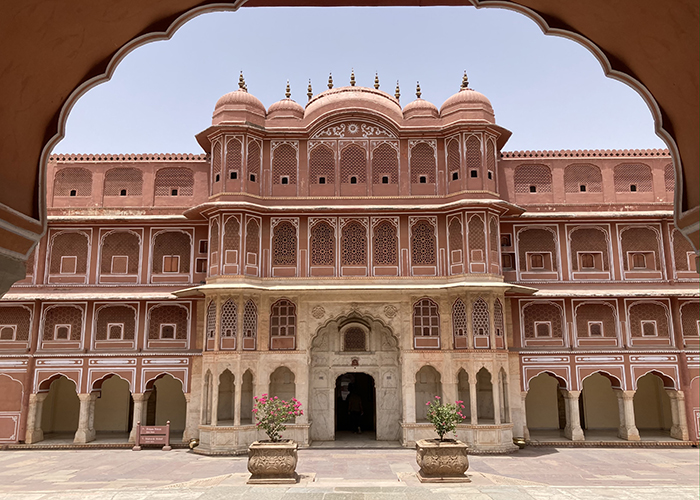 Last Stage |
Agra, UP → Abhenavi, RJ → Jaipur, RJ 171.5 mi (276.0 km) |
 Next Stage |
Ram Ram Saa!
Today marks the last corner of the Golden Triangle. After driving with Mr. Annu from Agra to Jaipur yesterday, I awoke in the exceptionally fancy Hilton Jaipur, refreshed, massaged, and full of moong dal halwa just to get over Agra’s disappointments. Now I was ready to explore the famous Pink City! It may not look very pink from the hotel, but the old core of the city has been pink since 1876 when Sawai Ram Singh I wanted to present a friendly color for the visit of the future King Edward VII, Emperor of India!
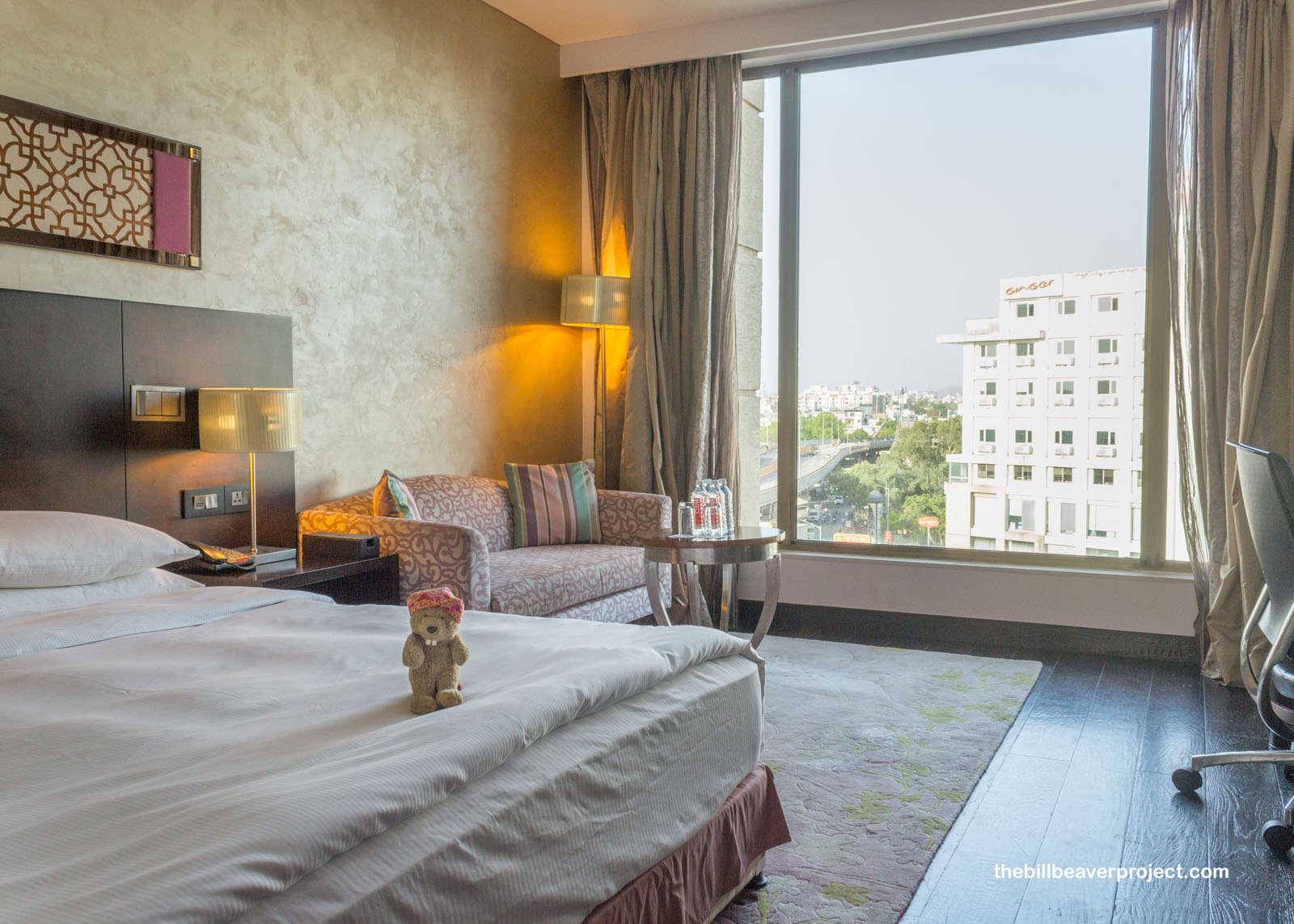 |
As we picked up our last guide, Manoj, the colors of Jaipur burst forth like a birthday cake dancer! Our first stop was the Hawa Mahal, or palace of the winds! While this extraordinary façade may look like a birthday cake, it was actually designed to resemble the crown of Krishna! Sawai Pratap Singh ordered it built in 1799 as an extension of the City Palace with 953 tiny windows where the palace’s women, forbidden to be seen in public, could peer out on the goings-on of the streets outside!
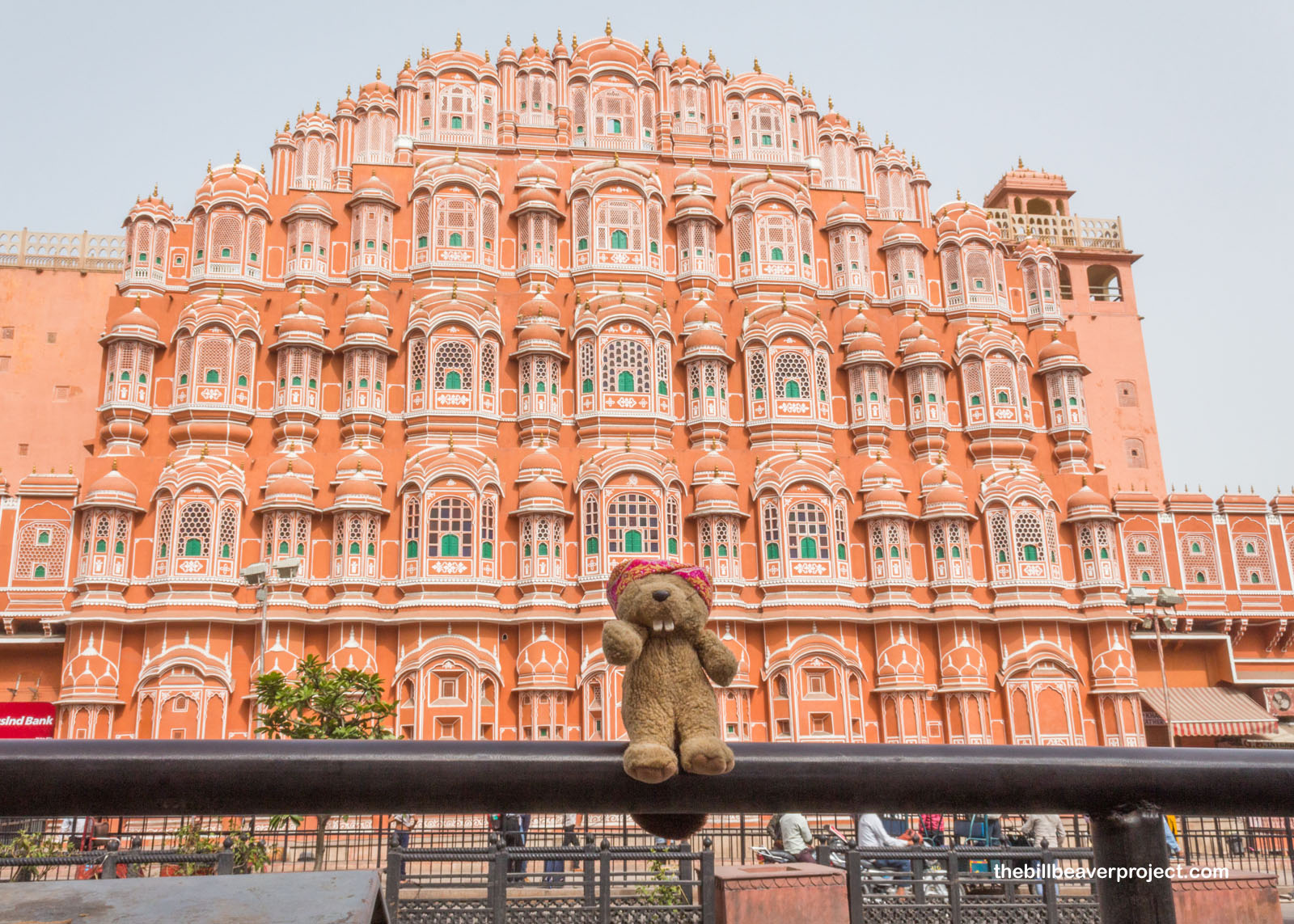 |
Then just as quickly as we entered the Pink City, we were out of it again, off to the village of Amer with its namesake fort, the Amer Fort! Corrupted to “Amber Fort” by English speakers, there isn’t a single cabochon of amber to be found here! Instead, this grand palace, built for Man Singh in 1599 AD under the name of either Amba (Durga) or Ambikeshwar (Shiva), whose temple stands nearby!
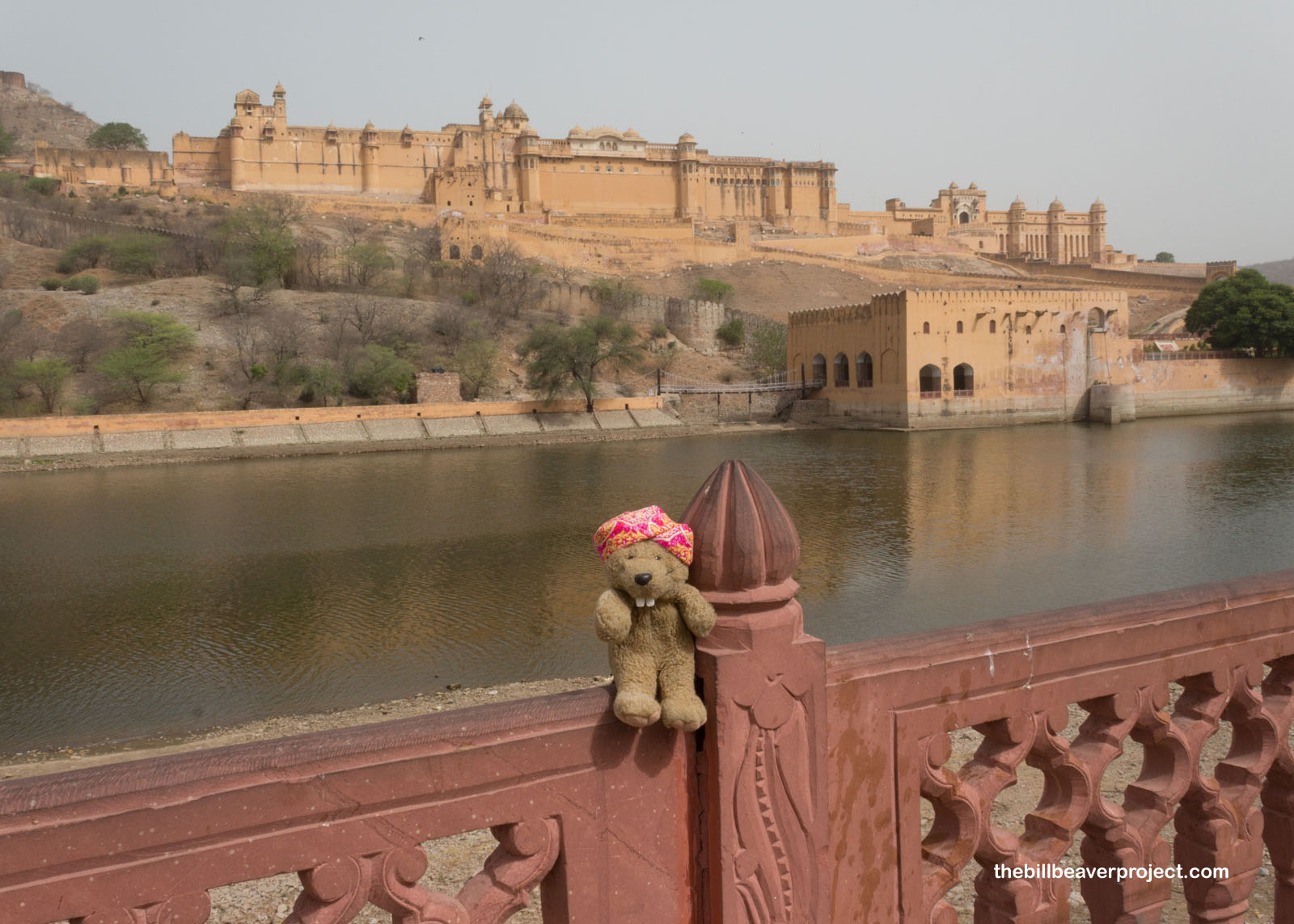 |
Passing through some of the oldest continuously inhabited buildings in India, we paused at another baori, the Panna Meena ka Kund! Not as grandiose as yesterday’s Chand Baori, this 16th Century stepwell was still an important place for villagers to gather water and for travelers to freshen up en route to visit the Maharaja! I could already tell, even this early in the morning, just how essential this well was in the summer time!
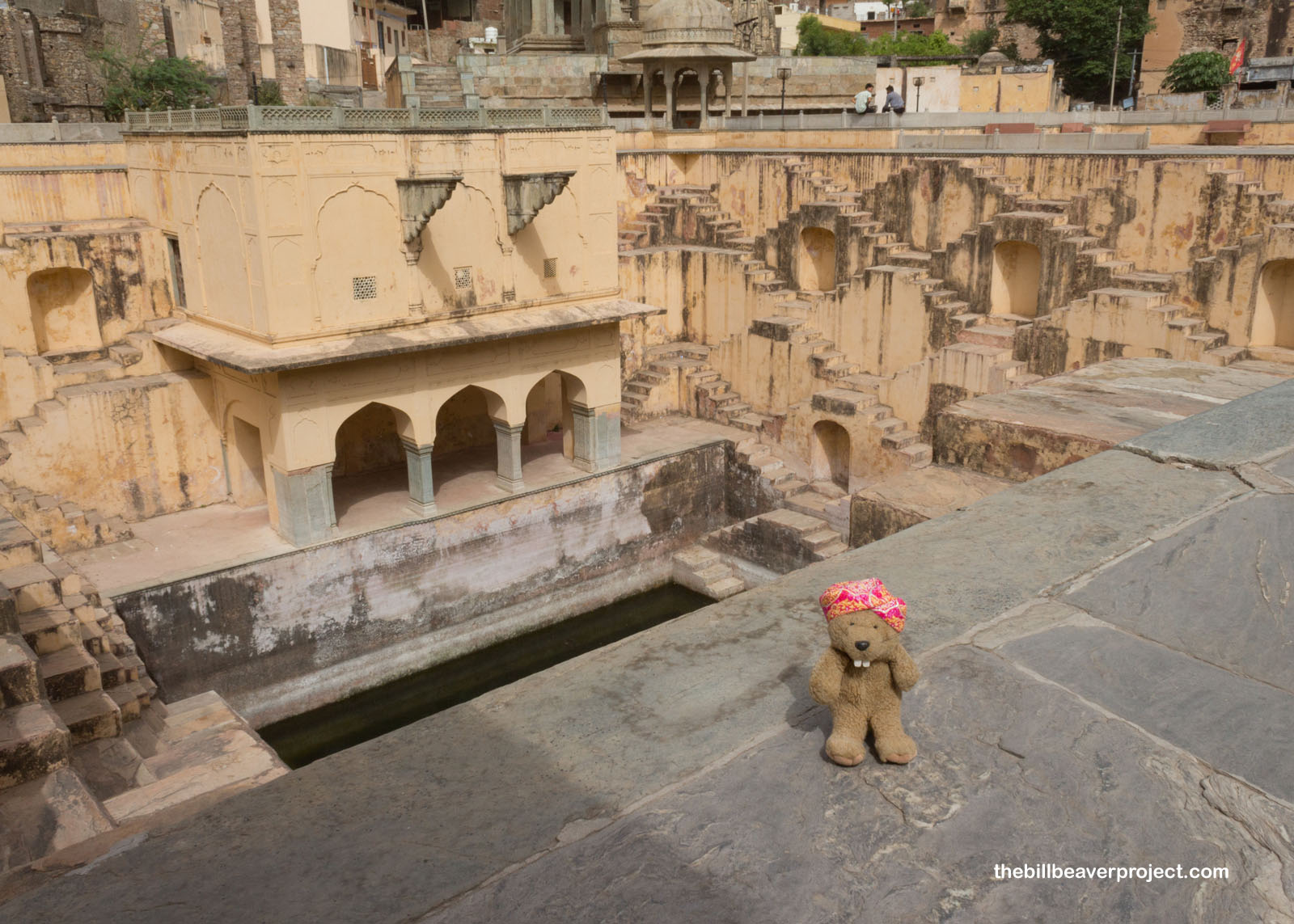 |
Because of that heat, we made haste through the Chand Pol, or Moon Gate, directly across from the Suraj Pol, or sun gate, which could only be entered by riding an elephant! Because of the heat, elephants were only available during the morning hours, and although Manoj suggested riding one into the Amer Fort, I wanted to see as much as I could before the temperature topped 110˚!
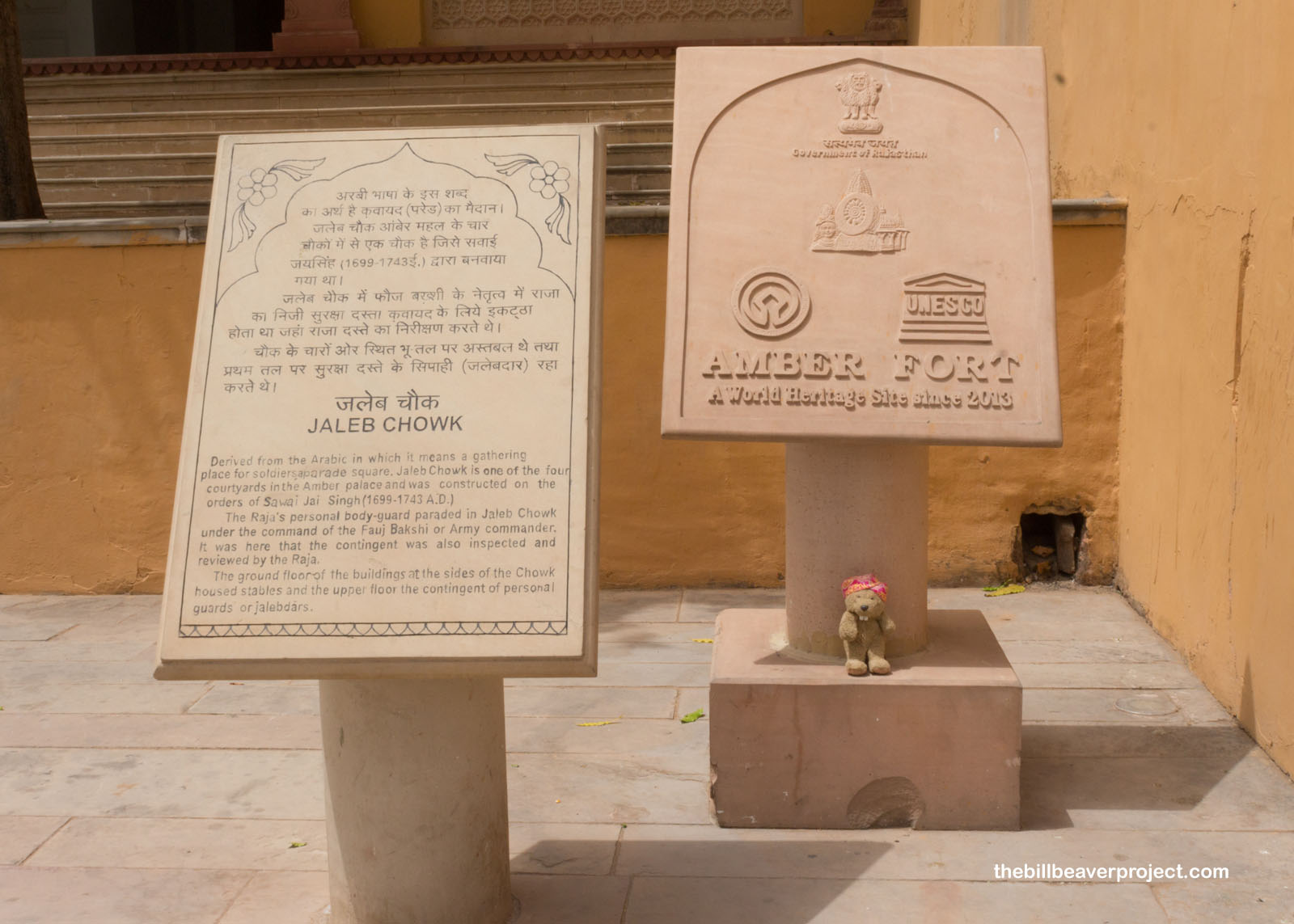 |
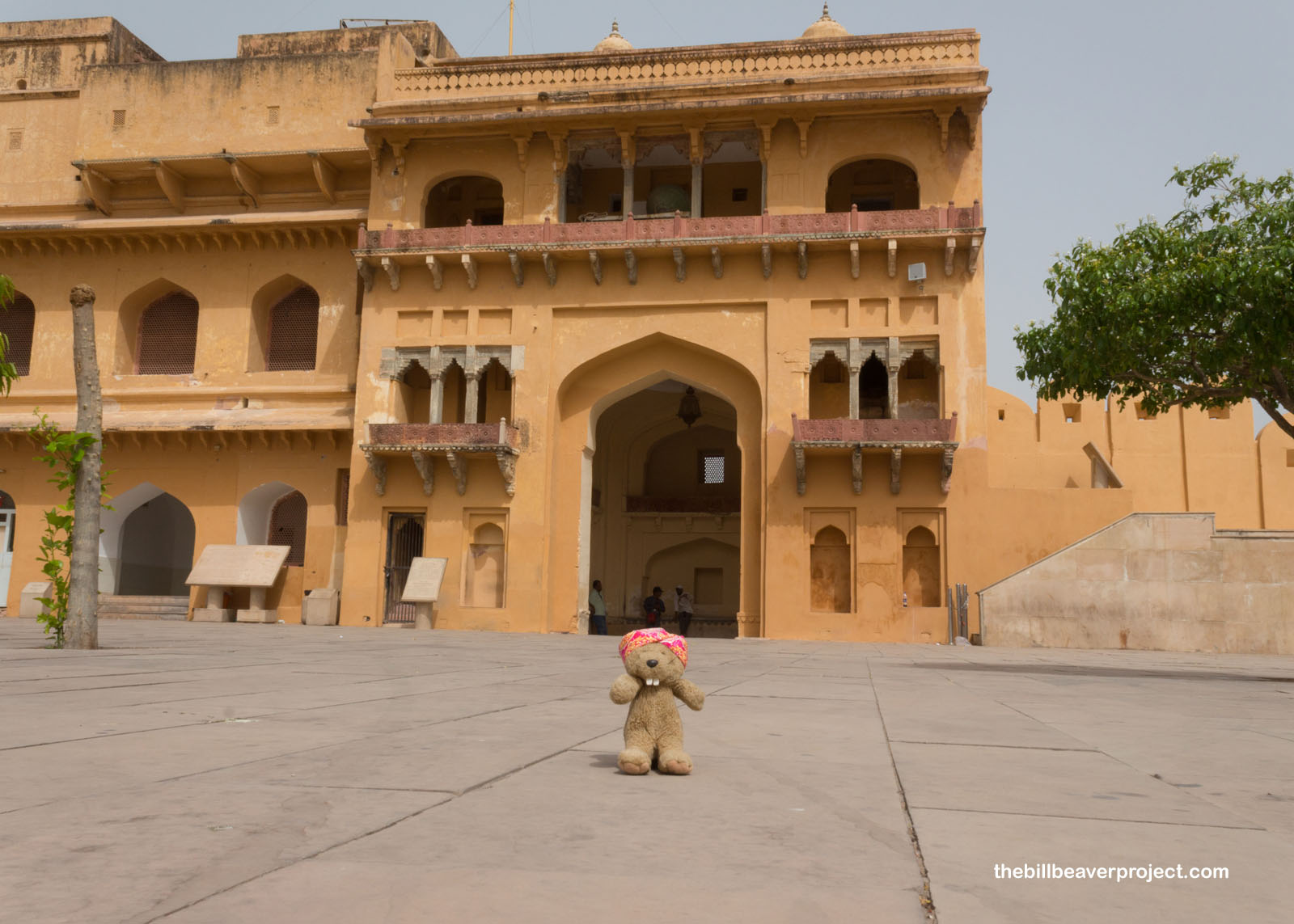 |
From the gates of the sun and moon, we proceeded up some stairs to the gate of Ganesh, or Ganesh Pol, featuring the famous elephant-headed breaker of boundaries and lover of sweets! It’s hard to see in the photo, but according to Manoj, this is the original, unrestored image of Ganesh, painted with vegetable dyes that have not faded since 1640! From the top of the Ganesh Gate, the queen would welcome her husband back from whatever adventure he’d been on!
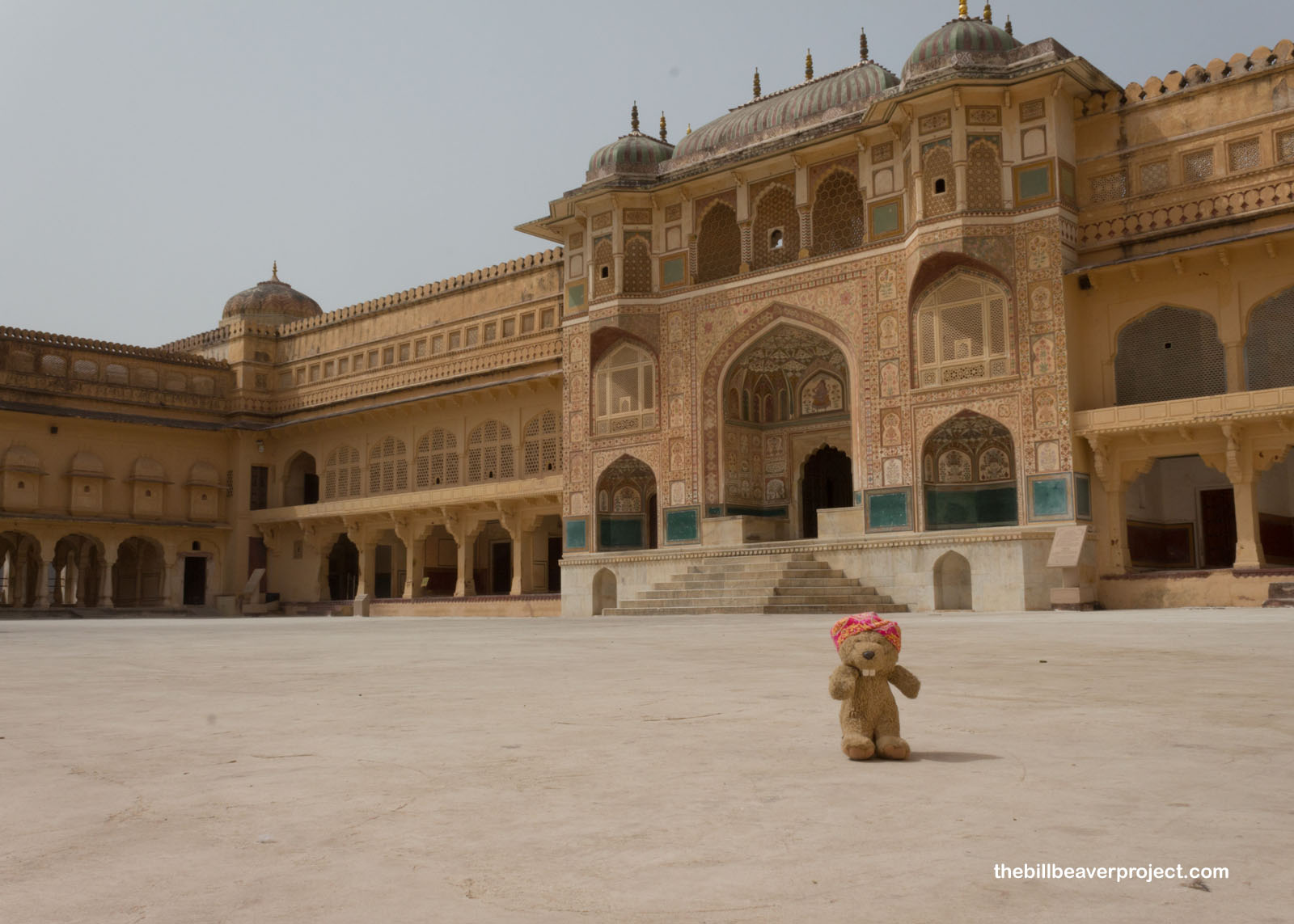 |
To the left of the gate was the Diwan-i-Aam, or public audience hall. Here, amid 40 carved pillars, the Maharaja would hold court with the public before retiring through the Ganesh Pol to the more spectacular part of the palace!
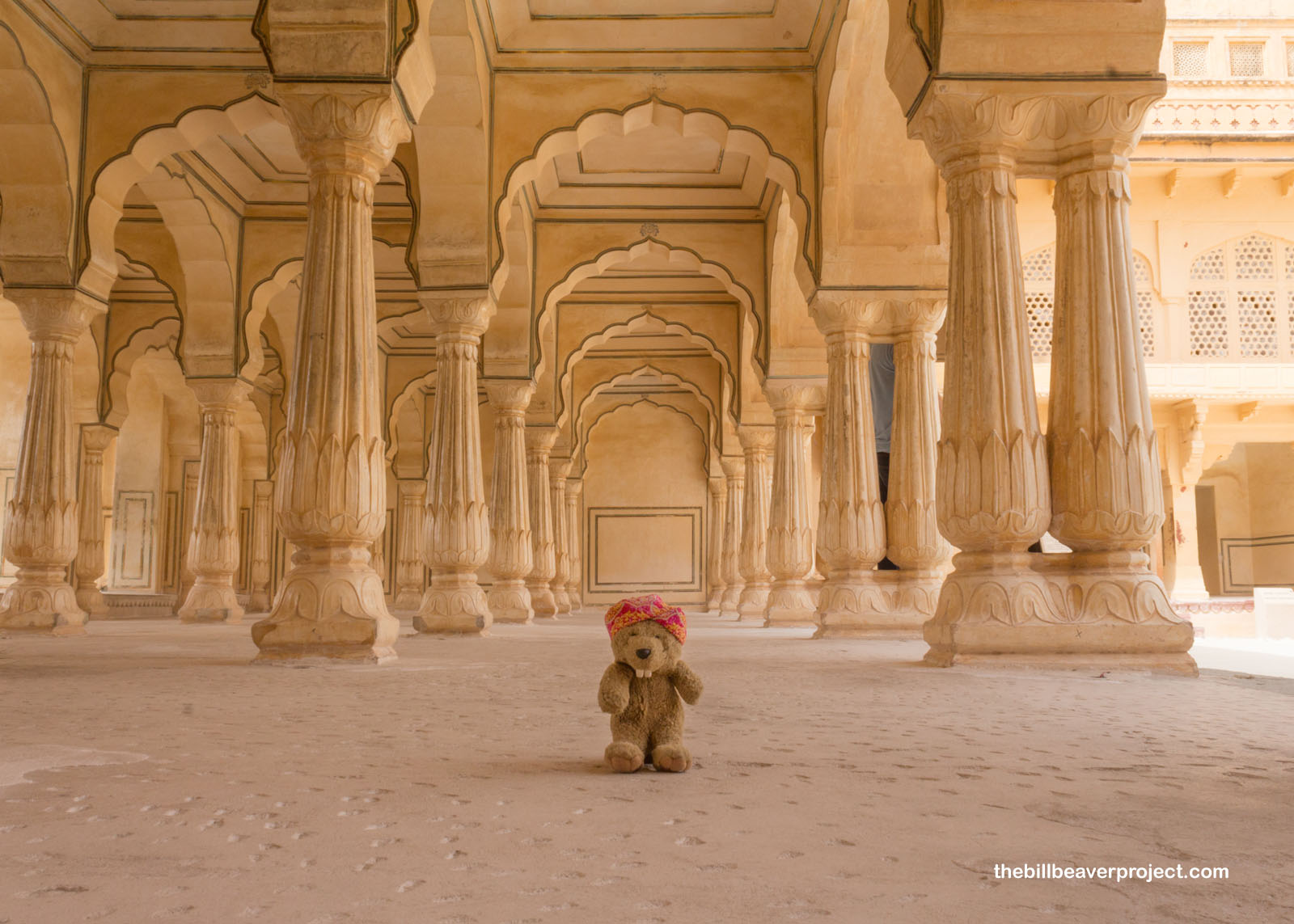 |
While the 17th Century public was never allowed past the Ganesh Pol, the 21st Century public has full access, mostly. I’ll get to that in a minute, but first, we had to look over the Aram Bagh, or Pleasure Garden! While the rajas maintained their Hindu beliefs throughout the reign of the Mughal Empire, they assimilated Persian ideas and aesthetics, like the charbagh garden, into their architecture. This garden features a star-shaped fountain with a platform at its center, where the queen could practice her music with cooling breezes all around her!
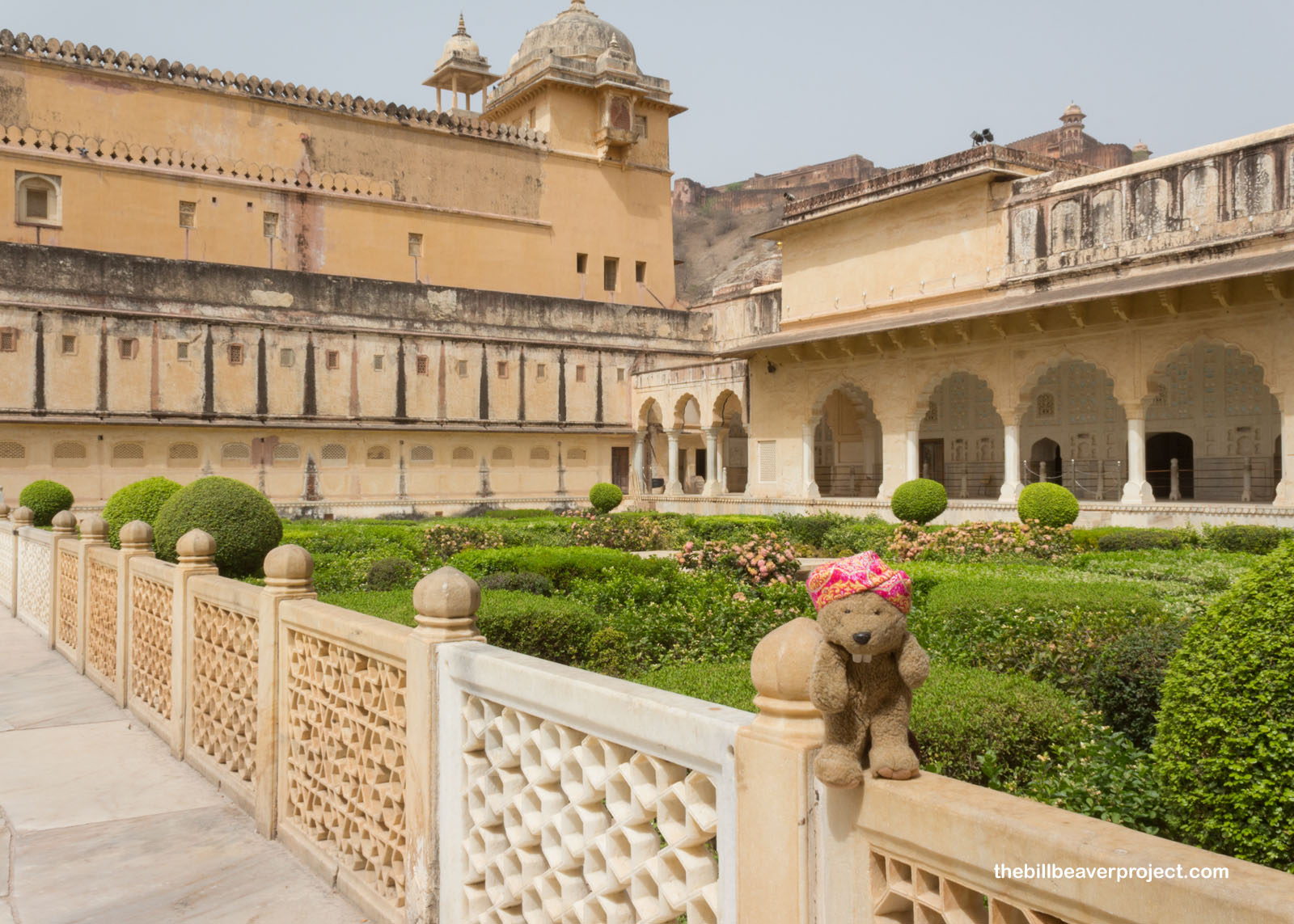 |
Facing this garden was the spectacular Sheesh Mahal, or glass palace, intricately decorated with floral inlay and mirrors from top to bottom! Manoj said that, during the summer, this hall would be surrounded with grass curtains, kept wet by dripping pipes to create a current of cool air! The light from the candles, reflected by the mirrors, would create a dazzling display for the queen’s enjoyment, since she couldn’t sleep outside under the stars. Much of the Sheesh Mahal is closed to visitors because of heavy vandalism, which is why, while I was annoyed by Agra’s policies, I could see firsthand what not having those policies led to. Don’t write your name on historic walls!
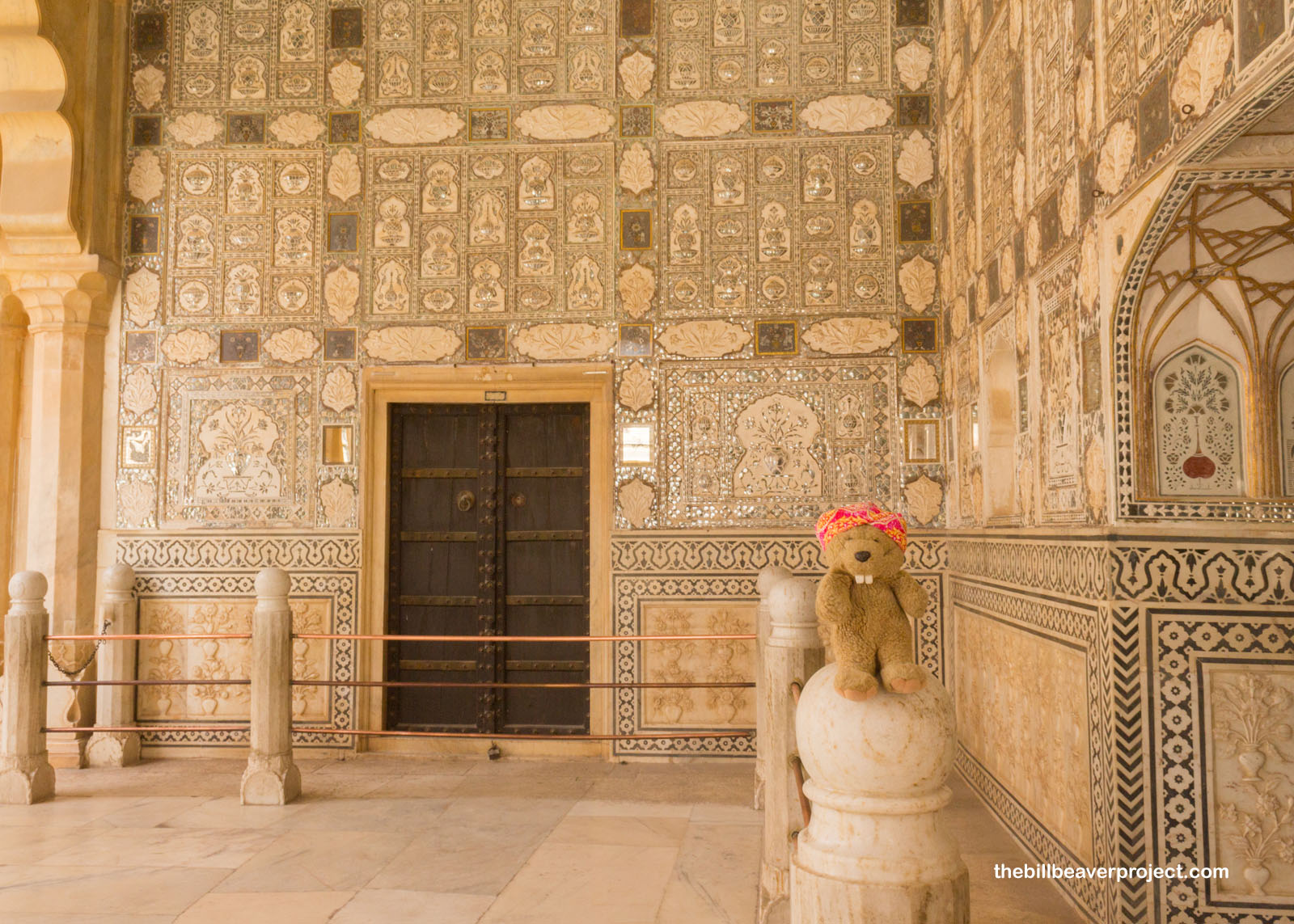 |
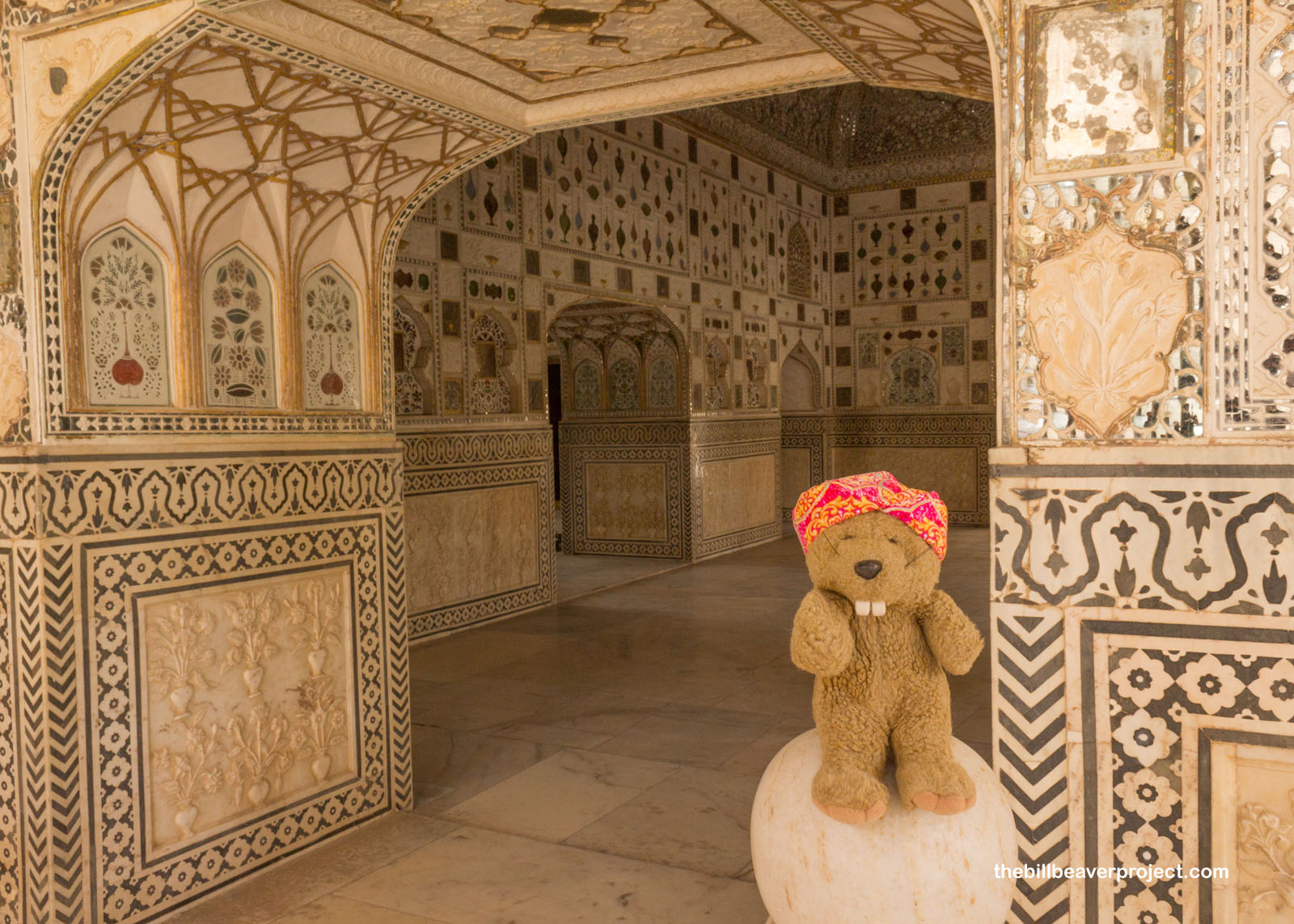 |
From the Sheesh Mahal, we ascended a ramp to the upper level. Here, in the Suhag Mandir, I was able to gaze through a latticed window called a jâlî, which the ladies of the palace would use to peer down on the Diwan-i-Aam without being seen themselves!
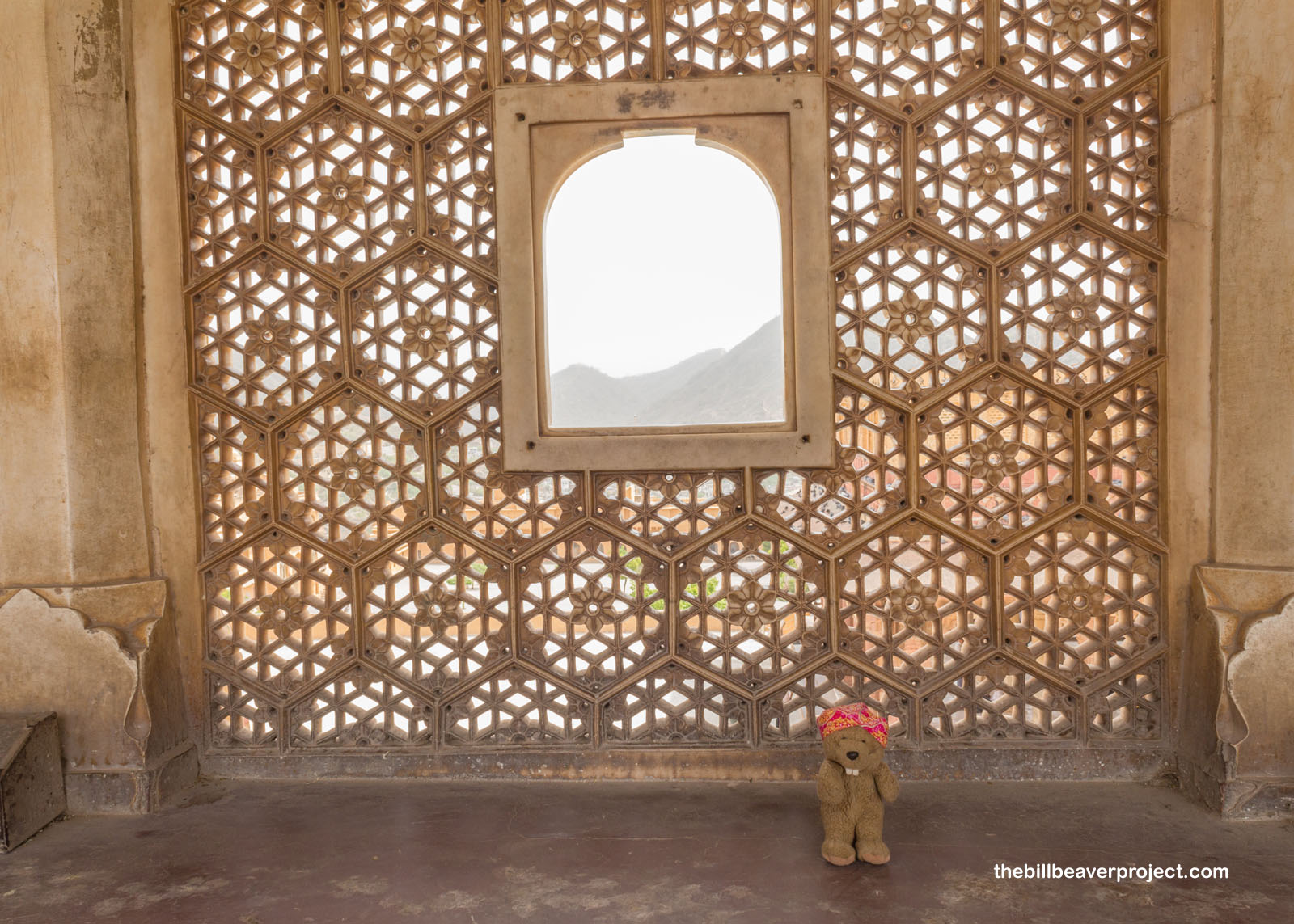 |
These upper levels took us back to the oldest section of the Amer Fort, Man Singh’s personal palace, where he lived during his reign of 1589 to 1614! Here, there were breezy lookouts upon the sun-scorched Nahargarh hills that protected the old village of Amer and an open-air room where the king and queen could dance together in the rain!
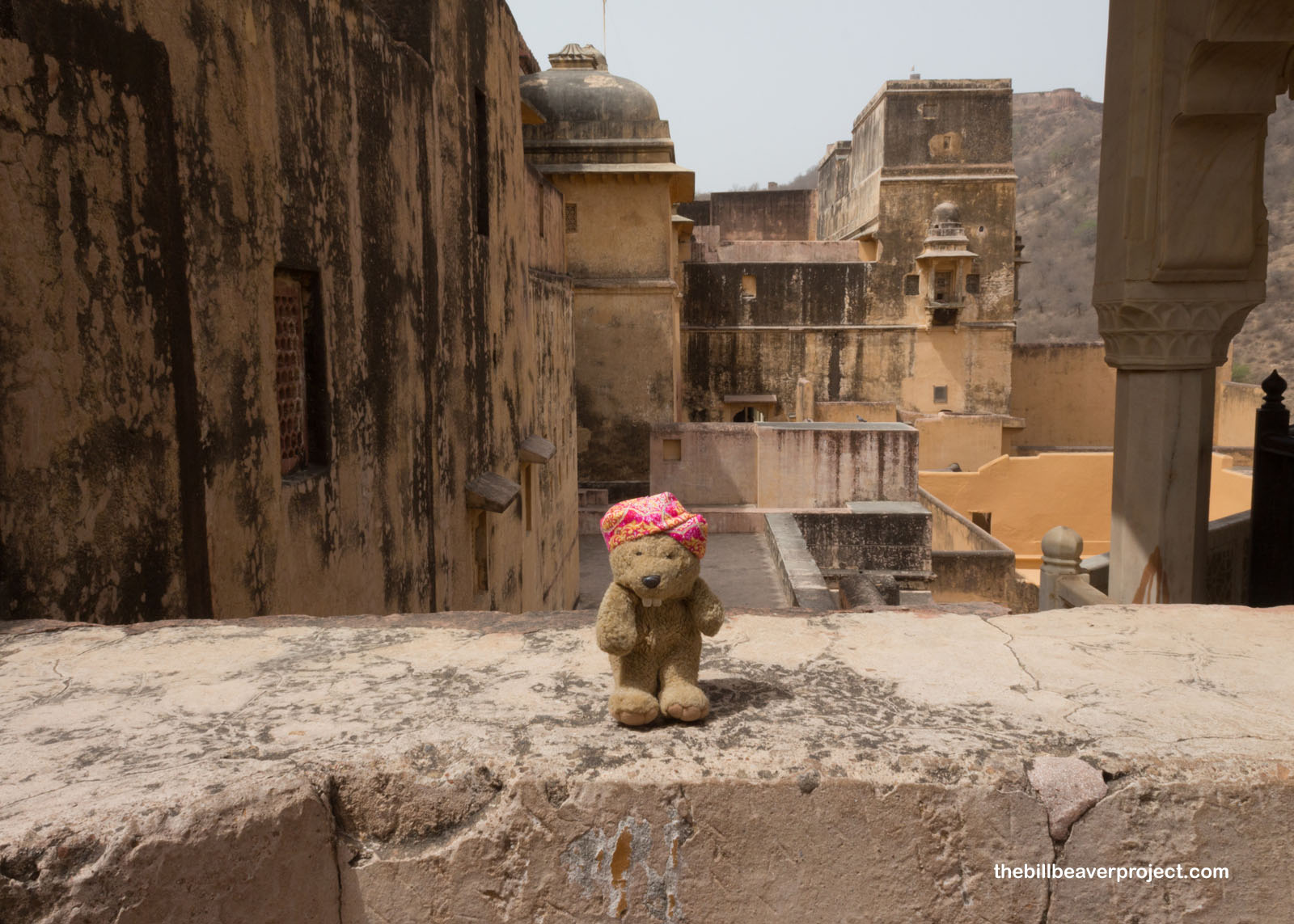 |
This was also where the queens and concubines lived in a courtyard called the Zenani Daori, or ladies’ apartments. There were twelve apartments here to house Man Singh’s three wives, five concubines, their children, and and their attendants! These royal ladies could not be seen by the public, nor could they speak with each other in private, but they could manage their land holdings and arrange the building of temples from here. The Maharaja, who could come and go as he pleased, built secret entrances into the back of each apartment so he could visit any of these women at a whim without drawing the attention of the others. Any issues that they might have had, they’d have to wait until the Maharaja held an audience with them in this central pavilion, or baradari!
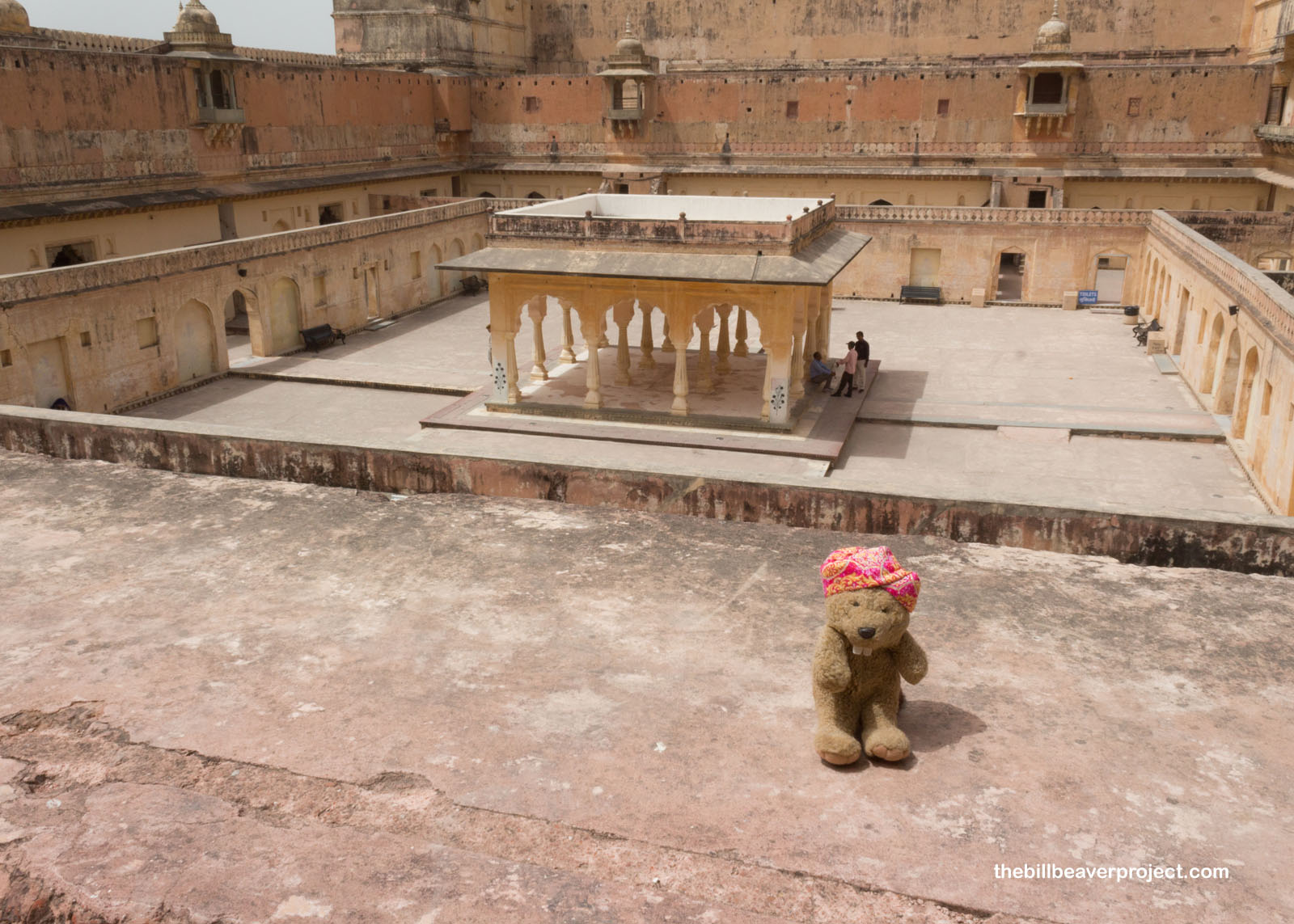 |
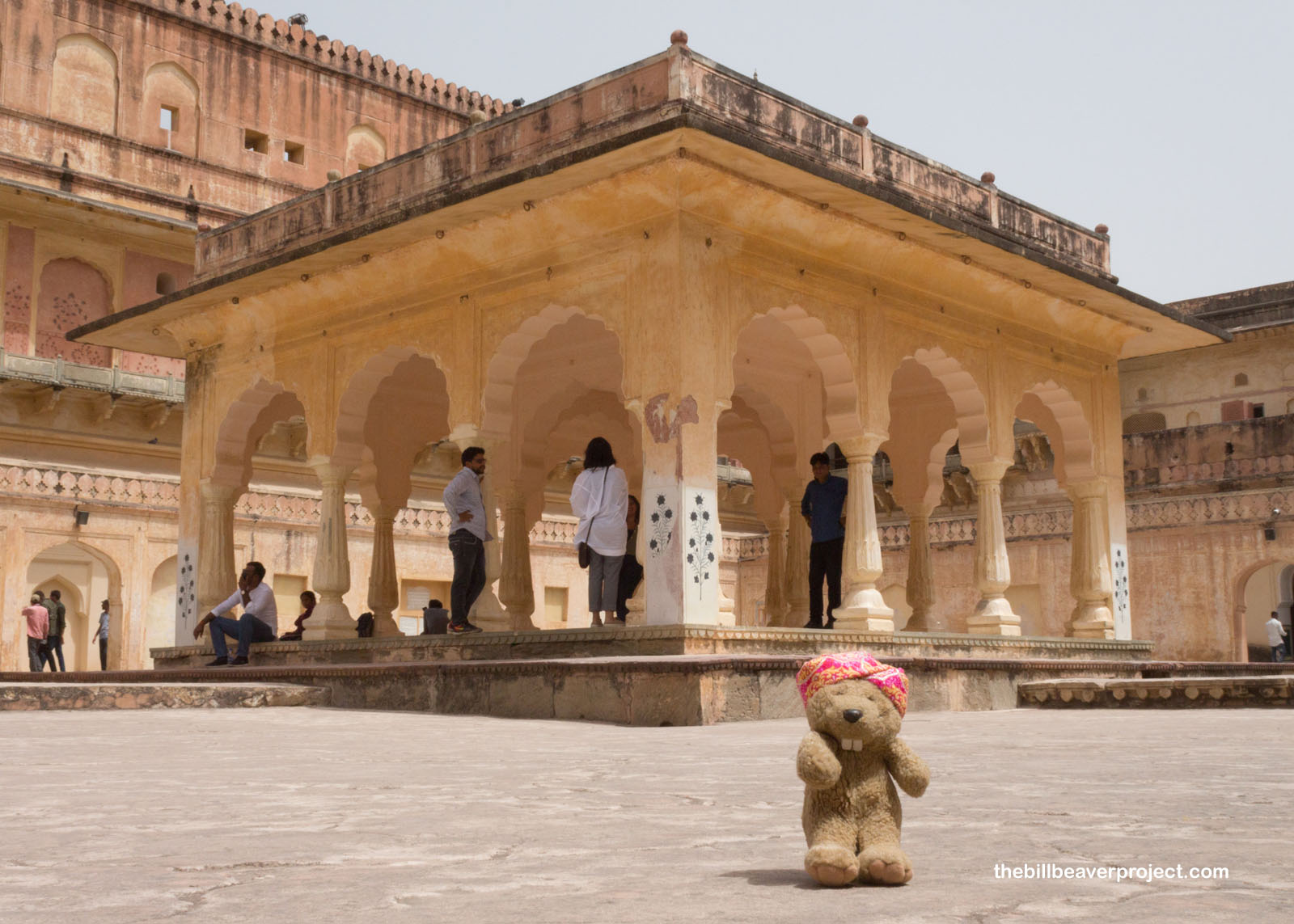 |
This concluded our tour of the famous Amer Fort, and Manoj and I headed back to Jaipur proper to see the Jal Mahal, or water palace! This was originally just your average 16th Century hunting lodge until a huge drought struck Rajasthan, and the city installed a dam to create the Man Sagar Reservoir! There are four levels to the Jal Mahal now underwater, but Manoj said restoration is taking place to reopen this amazing structure as a hotel!
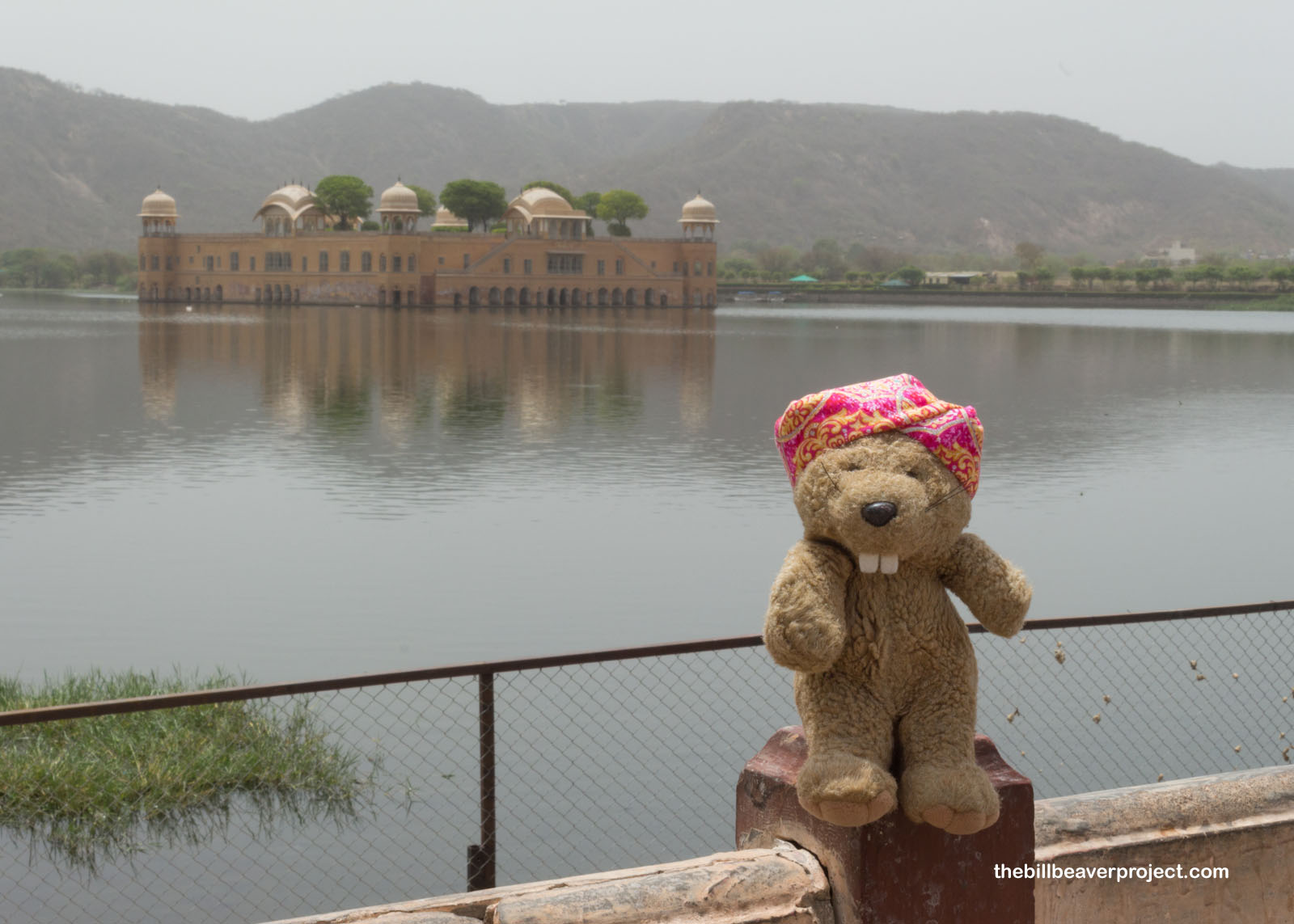 |
From here, we headed to our final stop, the City Palace of Jaipur, built by Maharaja Sawai Jai Singh II, who moved the capital here from Amer in 1727 and named it for himself! Jaipur is literally “Jai City!” The -pur ending comes from Sanskrit and means “city,” which you might recognize from other place names stretching as far as Singapore (singha + pur = lion city)! This first courtyard really embodied Jaipur’s pink theme!
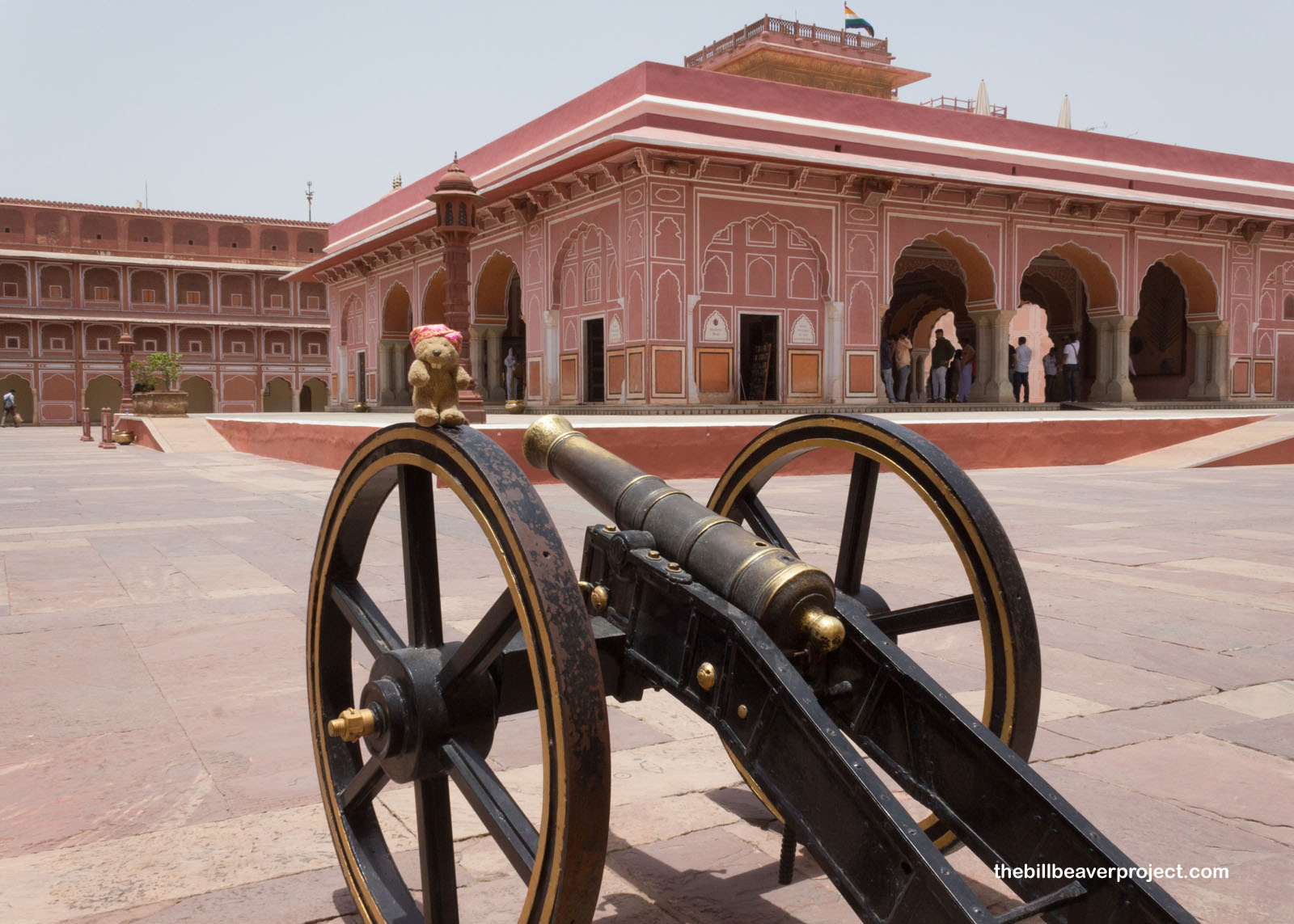 |
Our first stop at the City Palace was the Sarvato Bhadra, a private audience hall where the rajas would meet with nobles and other members of the upper classes. Because of its more private nature, this hall also housed coronation ceremonies and seasonal festivals!
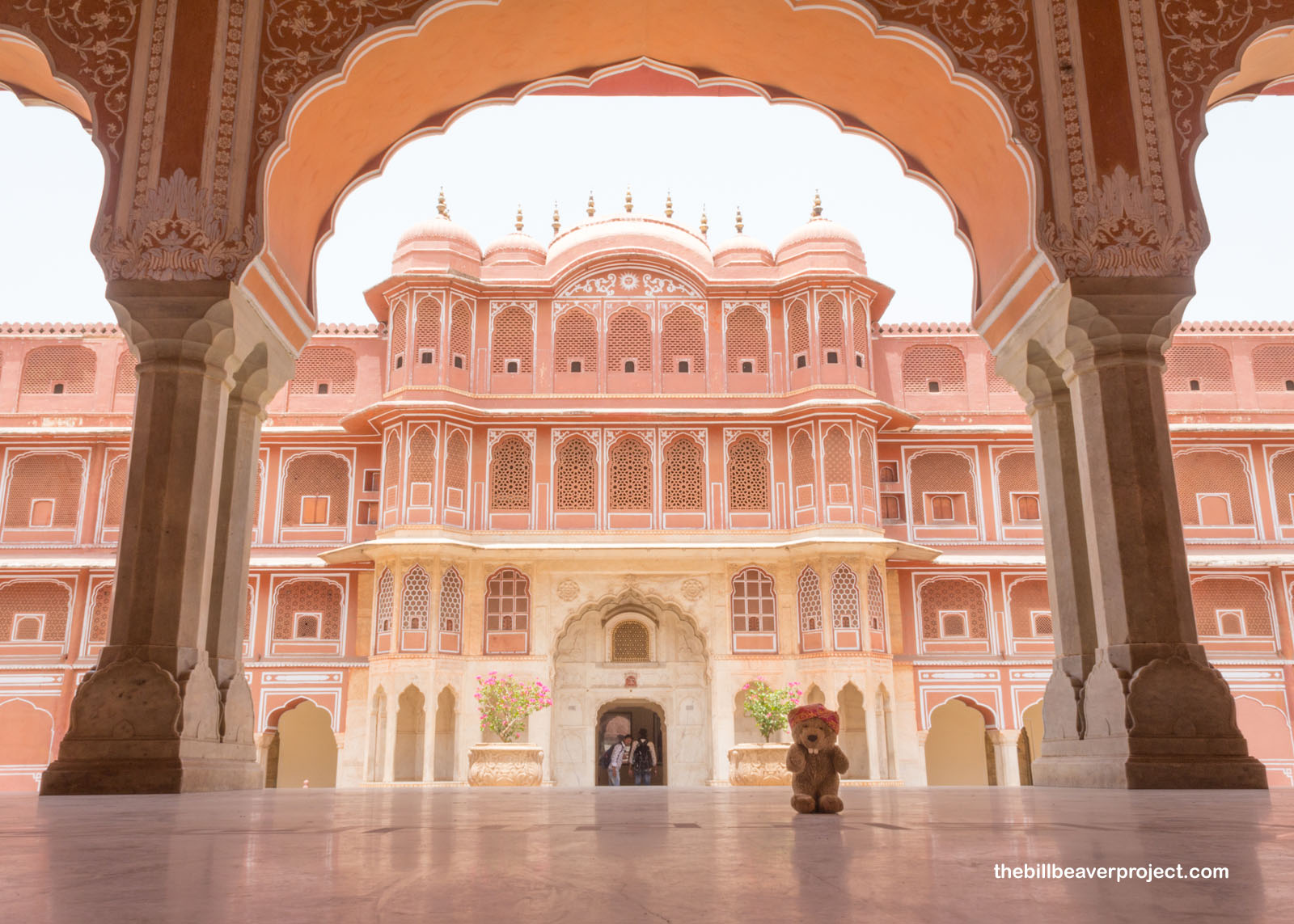 |
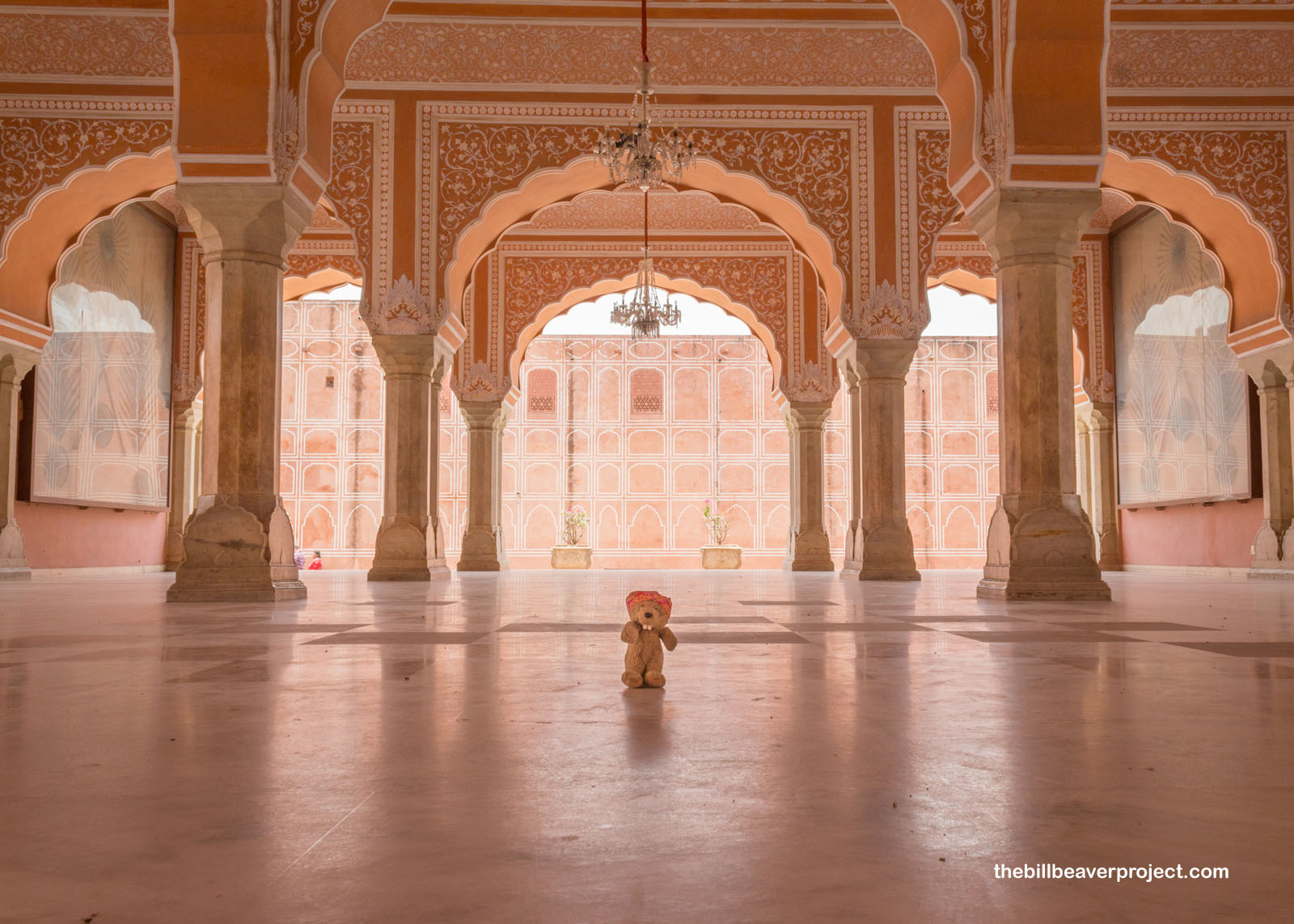 |
Housed inside the Sarvato Bhadra were two enormous, 1,000-gallon silver urns, called Gangajalis, the world’s largest silver vessels! Madho Singh II had these urns filled with water from the Ganges River for ritual purposes and to safely cross the ocean without losing his Hindu caste! Because of these rules, in order to attend Edward VII’s 1901 coronation in London, the Maharaja had to get a ship where beef had never been served, carry the idol of his family deity with him, and exclusively drink and bathe in water from the Ganges during his 3-month voyage!
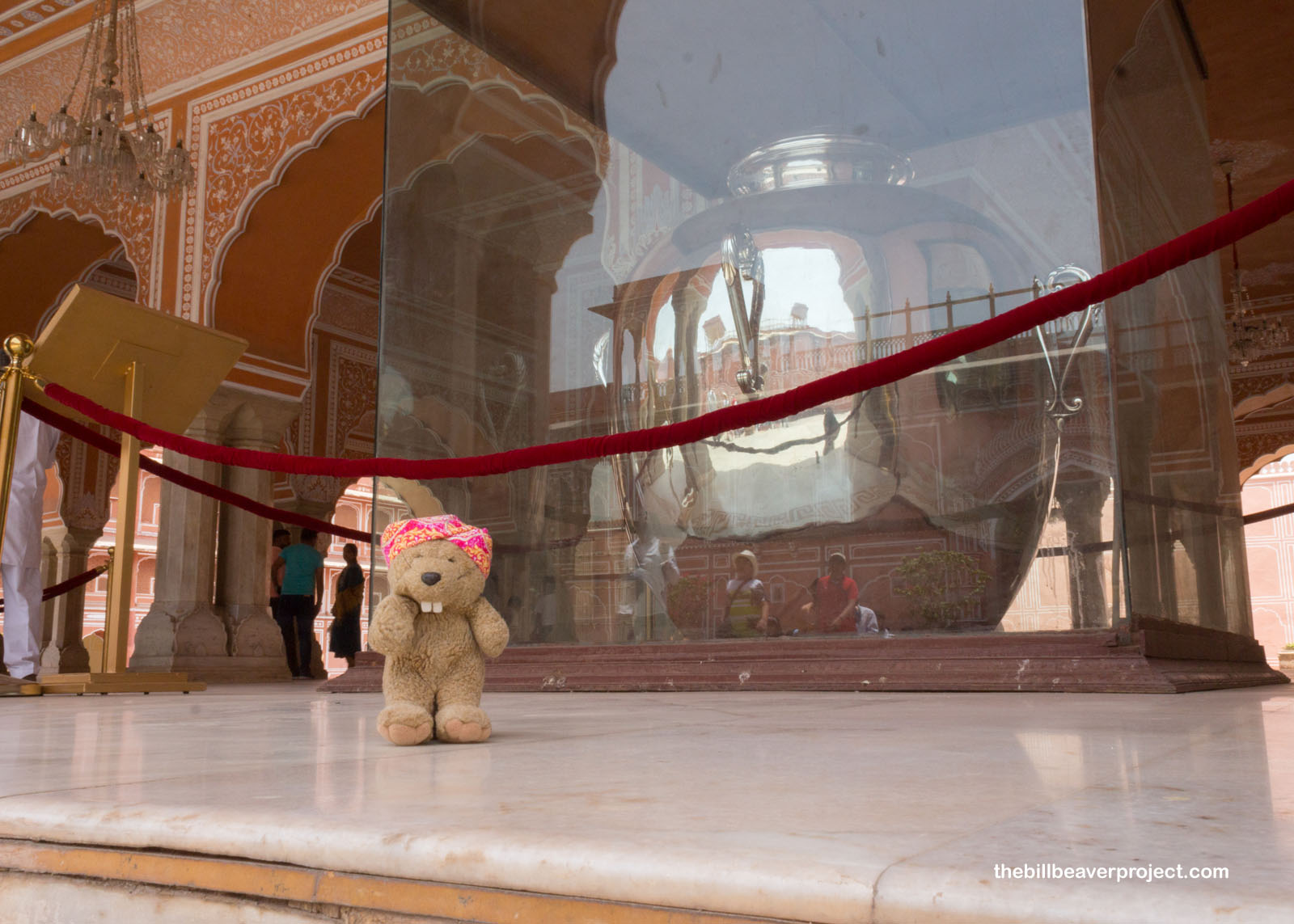 |
We dipped into the Pritam Chowk, or Courtyard of the Beloved, to look up at the Chandra Mahal! This seven-story palace was the main residence of Maharaja Jai Singh II and is the oldest part of the City Palace complex. It’s closed to the public, because it is still the royal residence! The current Maharaja, 23-year old Padmanabh Singh, calls this palace home, though his title has been symbolic since Indian independence in 1949!
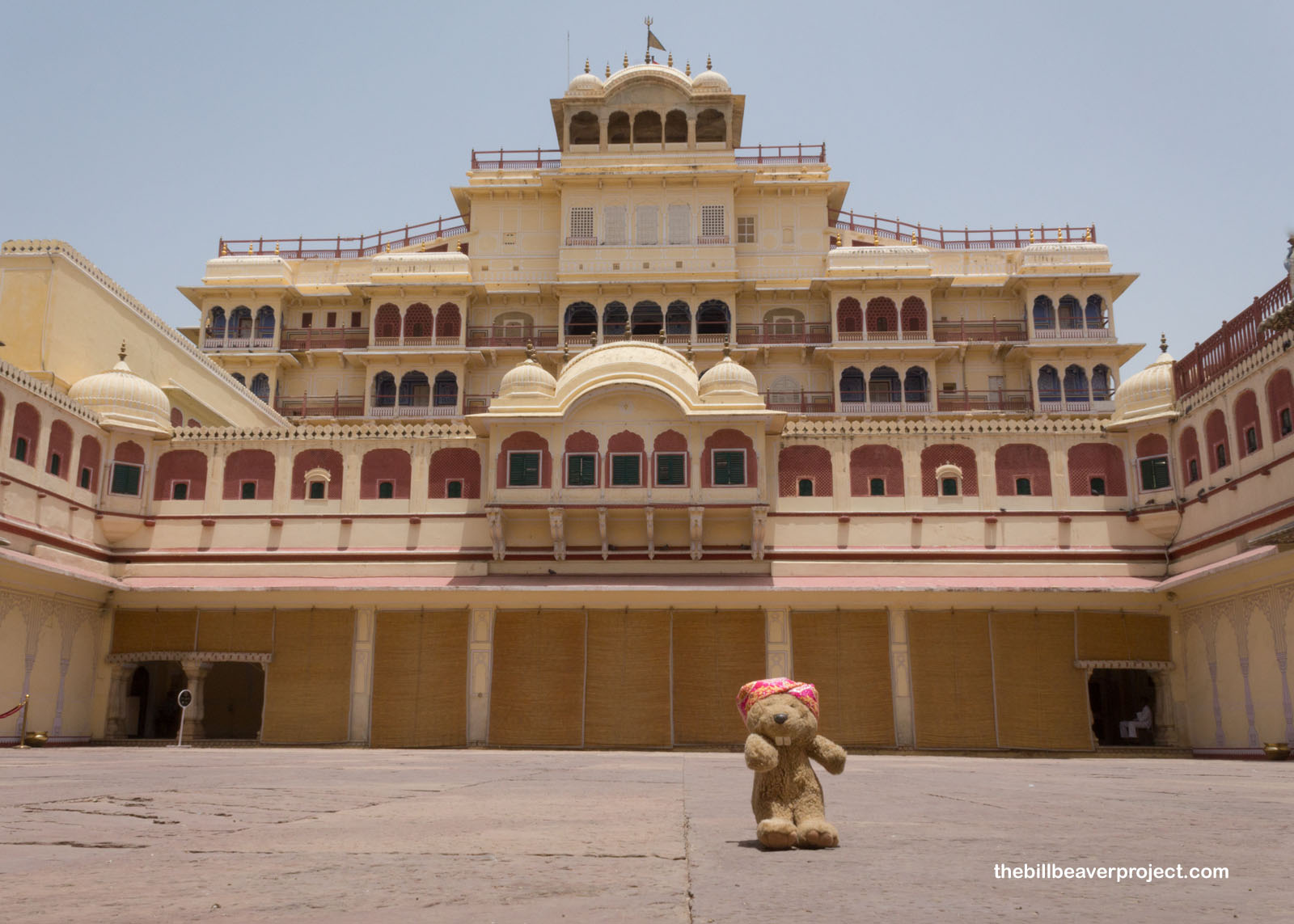 |
Our last stop at the City Palace was the Mubarak Mahal, the Welcome Palace, once a place to greet foreign visitors, now a museum of royal artifacts. These artifacts included the enormous pajamas of 7-foot tall Madho Singh I, known as the Mota Raja or fat king! Too big to ride horses, he was known to ride elephants instead, and I joked to Manoj that sometimes the elephants had to ride him!
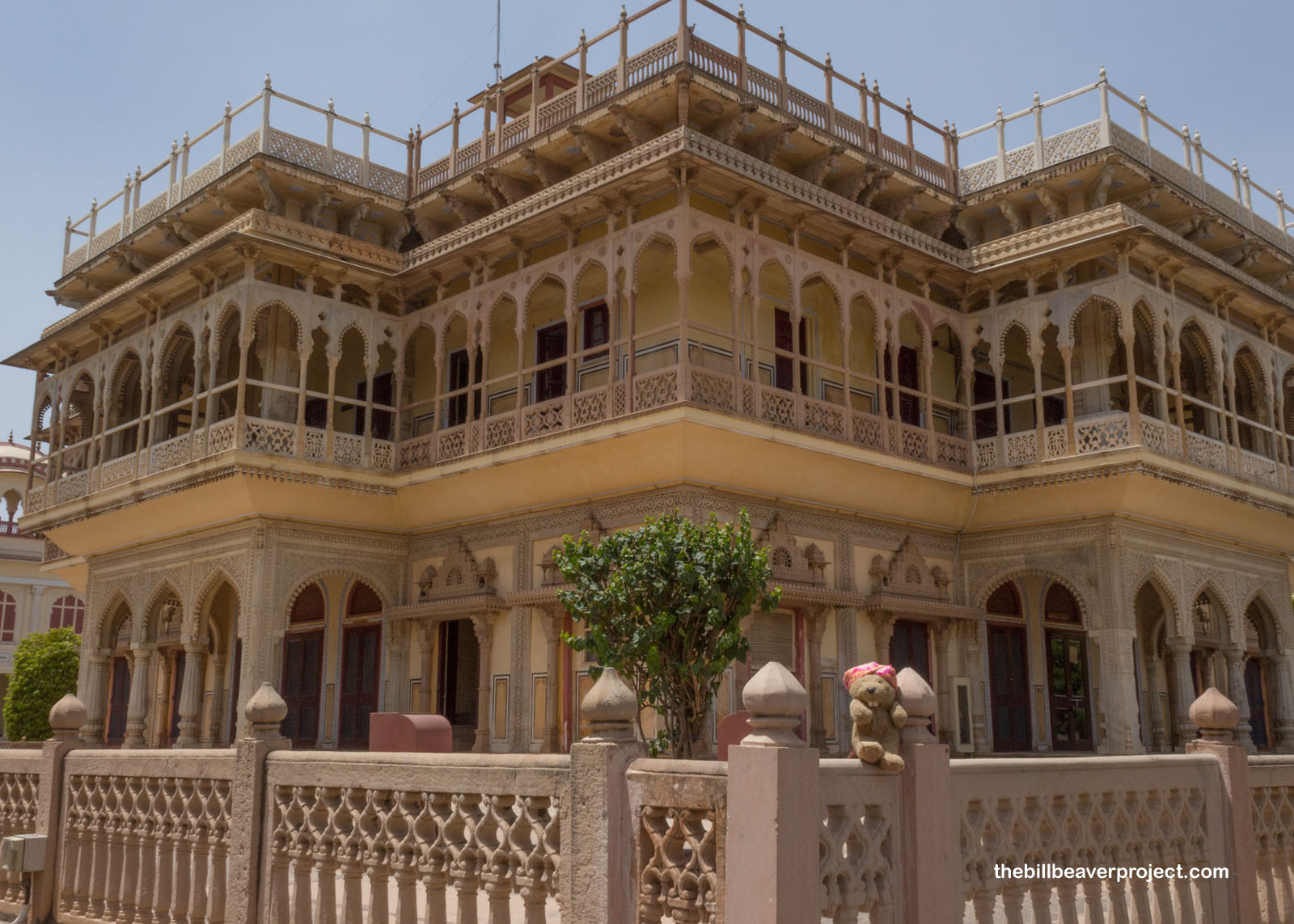 |
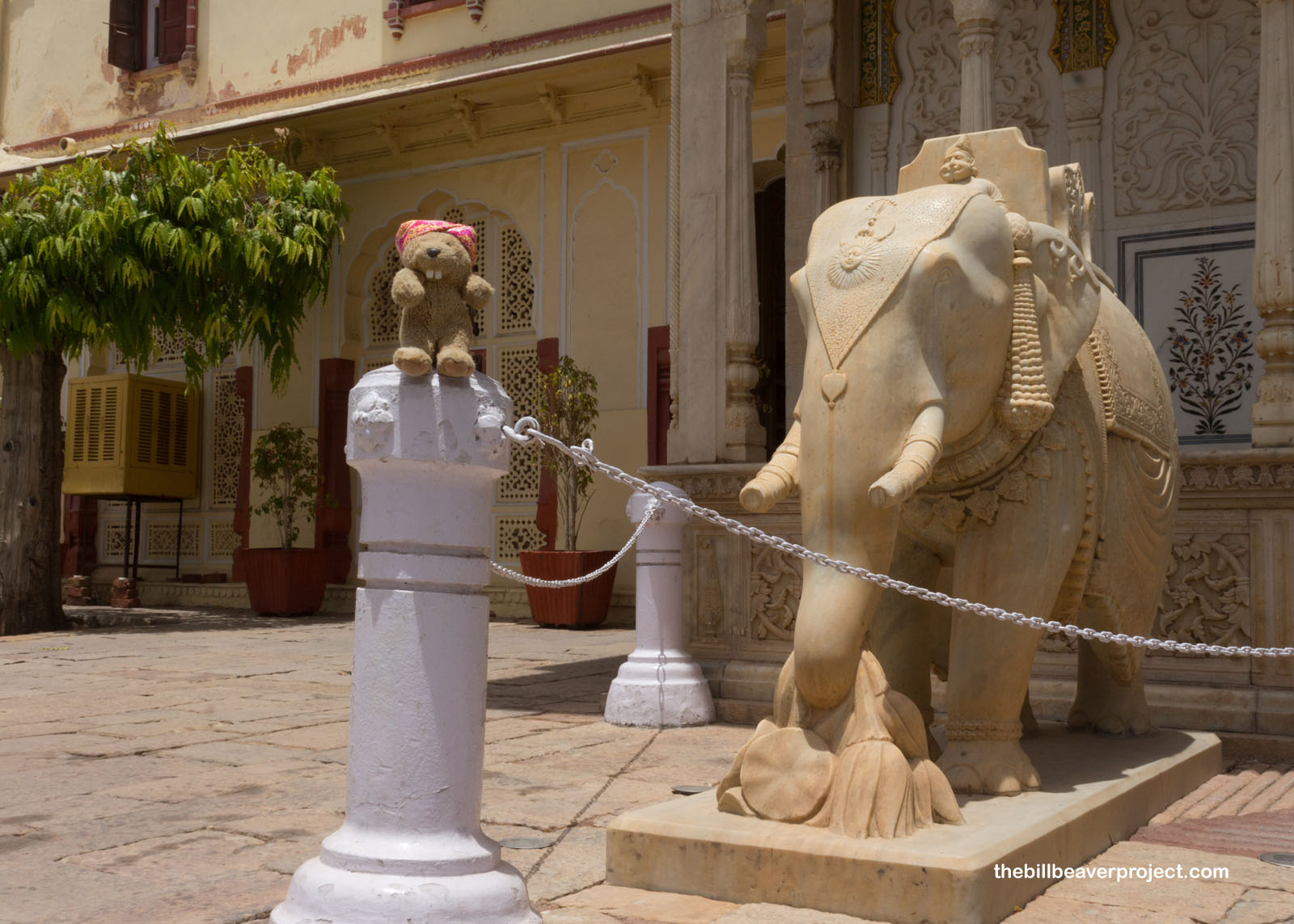 |
From there, we crossed the street to the Jantar Mantar, a huge outdoor observatory set up by the fat king’s grandfather, city founder Jai Singh II! Fascinated by astronomy, this maharaja commissioned observatories to be built at Delhi, Mathura, Benares, Ujjain, and here in Jaipur! This would be one of the most challenging spots to visit because there was no shade at the height of the desert heat! Nonetheless, we were going to persevere for history!
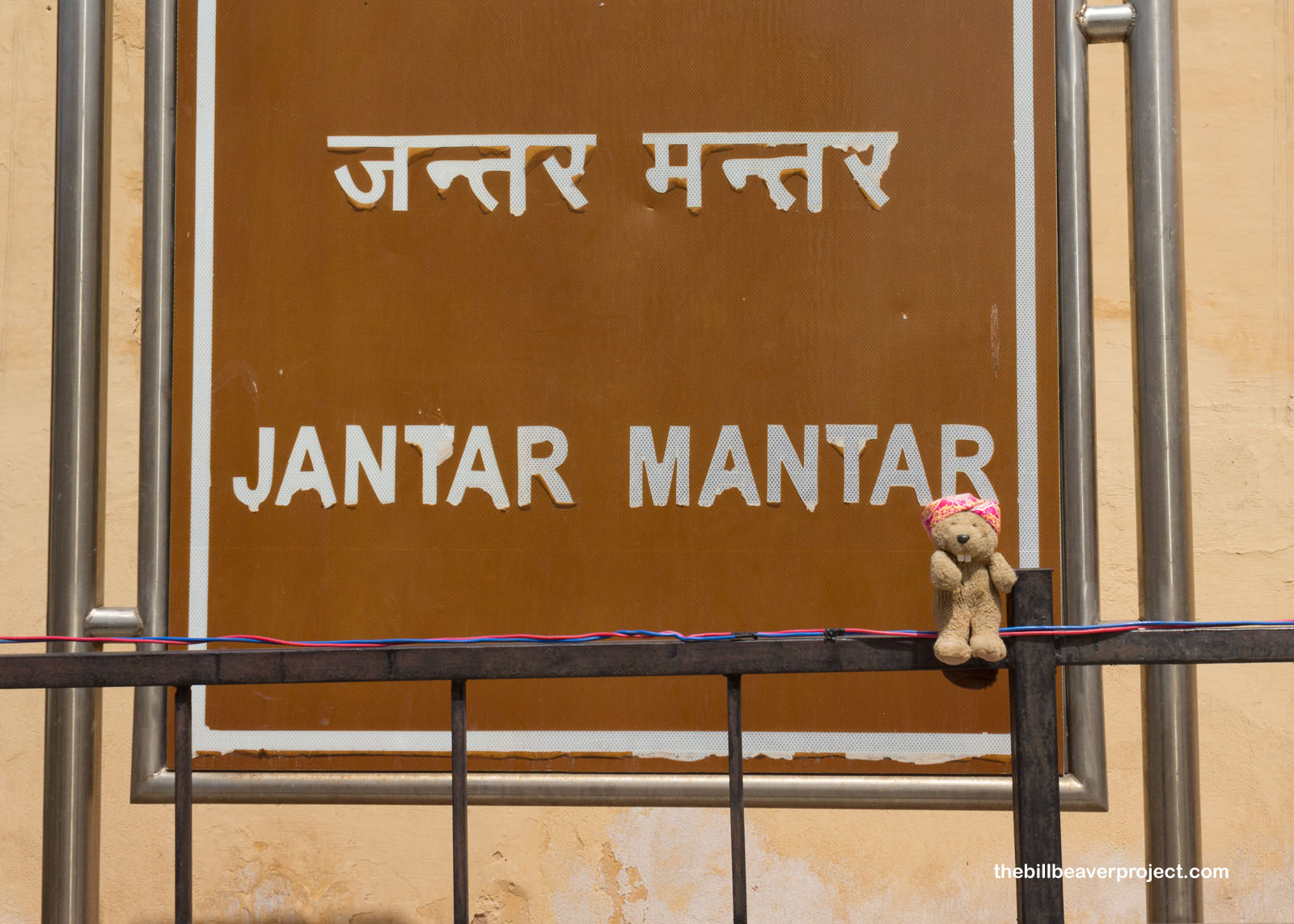 |
Manoj and I went from device to device, starting with the Laghu Samrat Yantra! This small sundial was designed to calculate Jaipur’s local time, based on the position of the sun! Local time is much more specific than a time zone, and even today, this device displays Jaipur’s local time to within 20 seconds!
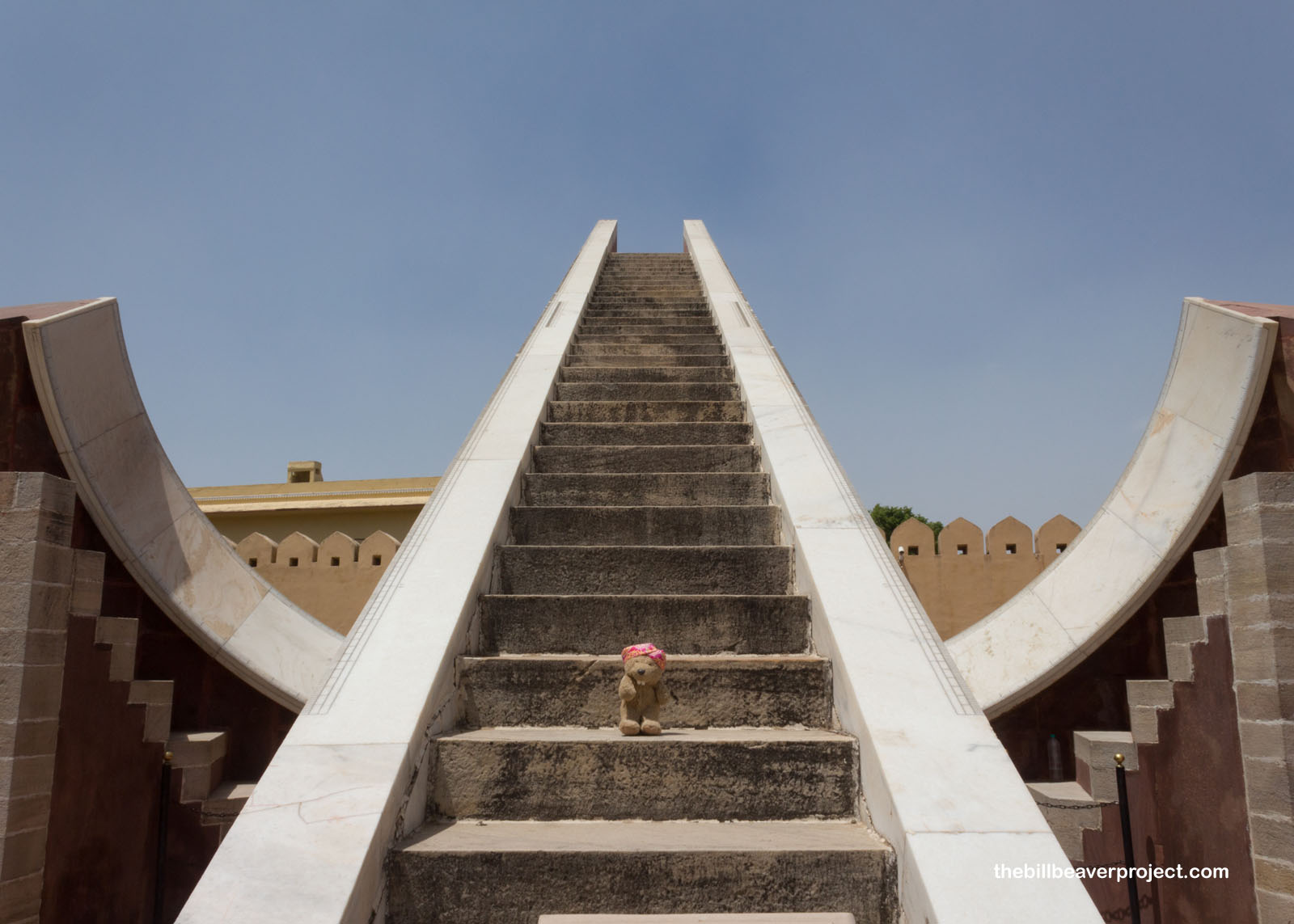 |
The next device, the Dhruvdarshak Pattika, was super simple. It just pointed to Polaris, the north star! Being the height of the afternoon, I couldn’t see the pole star, but this would have been used like a modern compass back in the 18th Century!
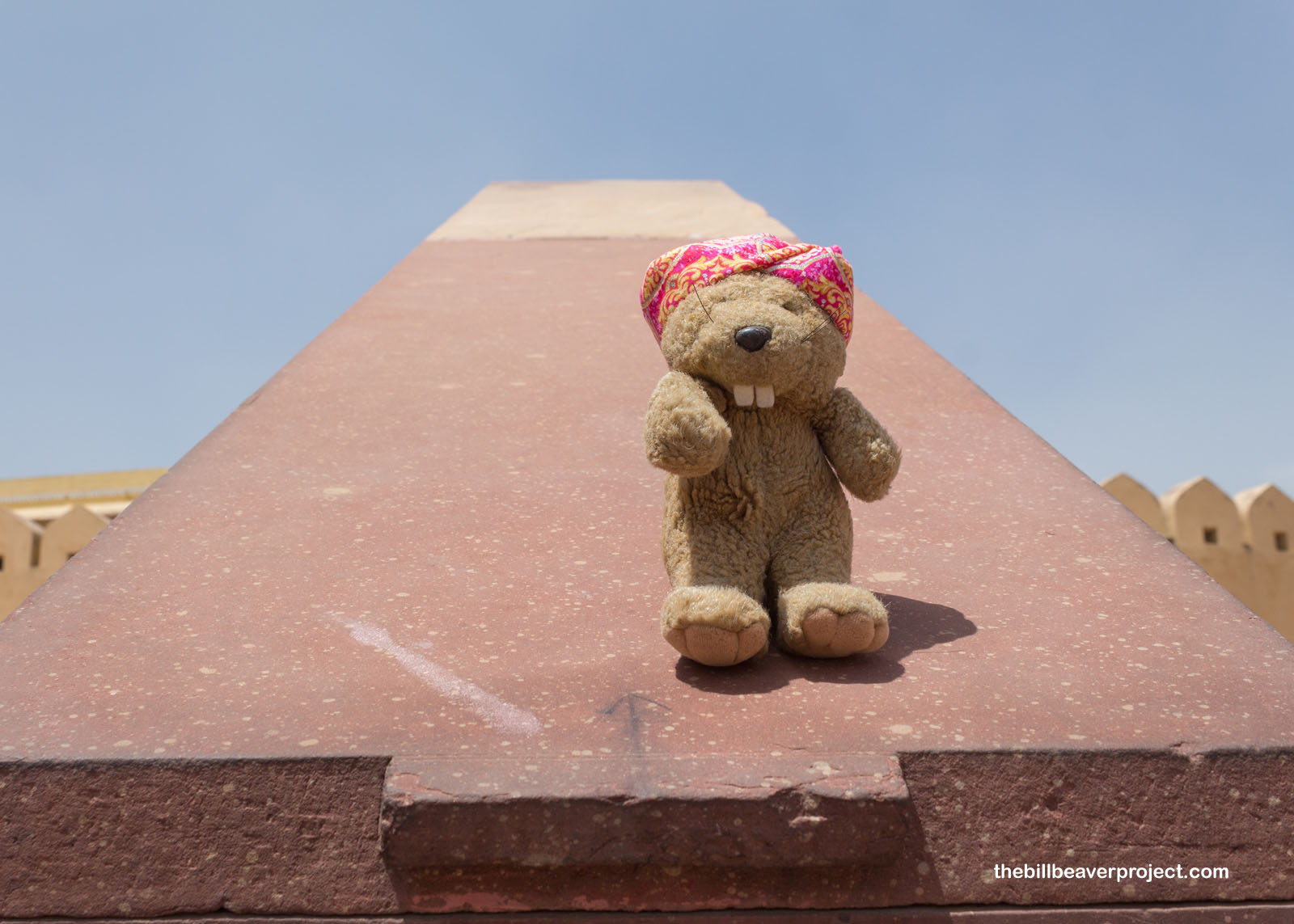 |
The circular Rama Yantra was set up to determine the altitude and the azimuth of the sun during the day and the position of the stars at night! Each object would be aligned with the central pillar and its angle calculated against the pillars on all sides. This information is useful for calculating bearings, especially in mapping and on voyages!
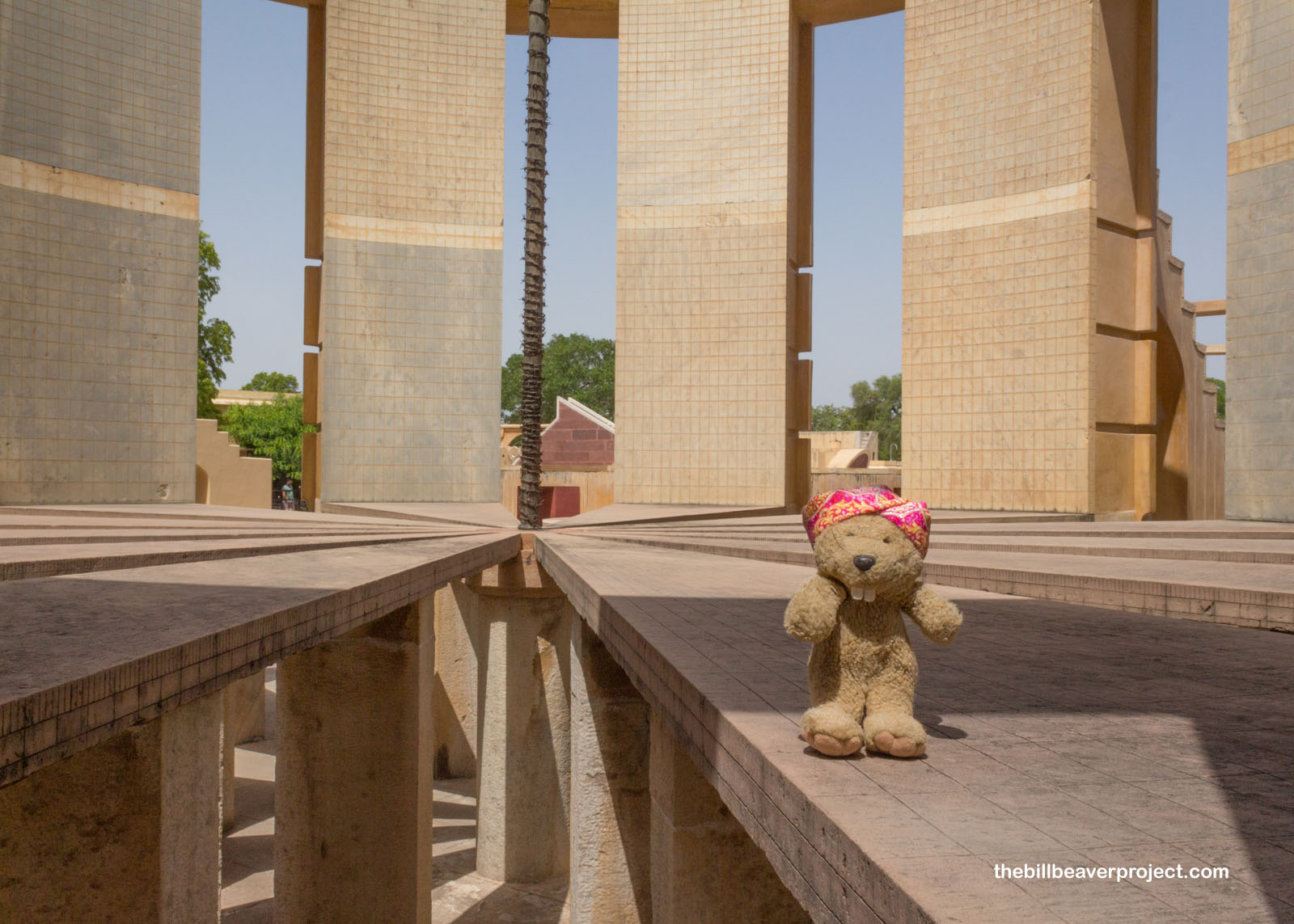 |
Like the Laghu Samrat Yantra, this device, the Nadivalaya, also calculated time but also the seasons! Its two faces are set up with hours and minutes and align with the equinoxes. The south face is lit between the autumn and spring equinox, while the north face is lit the rest of the year!
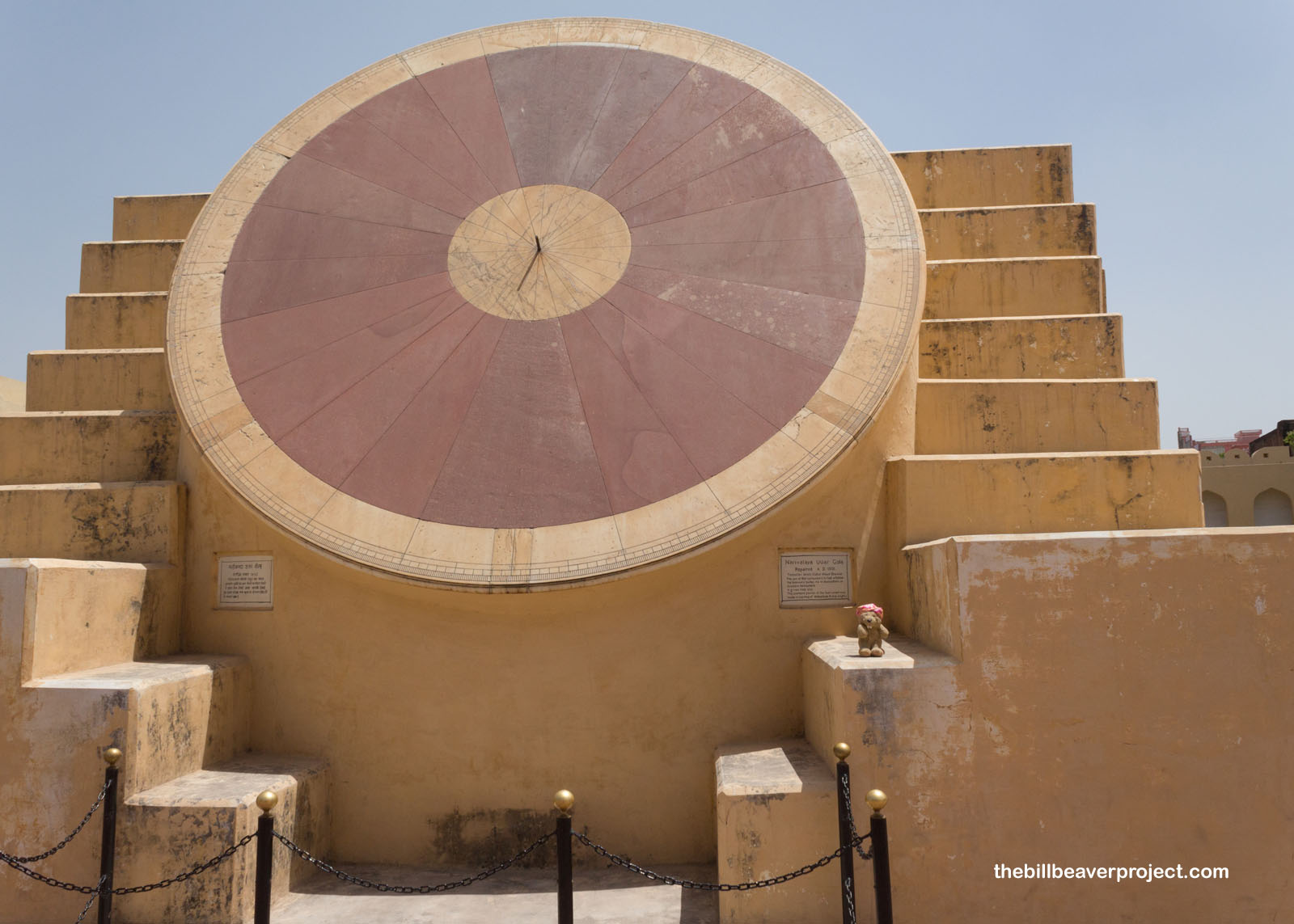 |
The Jai Prakash took those observations to a whole other level! Using a metal wire to cast shadows on these metal plates, it could calculate time, season, the position of stars and planets, and the stage of the zodiac! Observers could even use it at night!
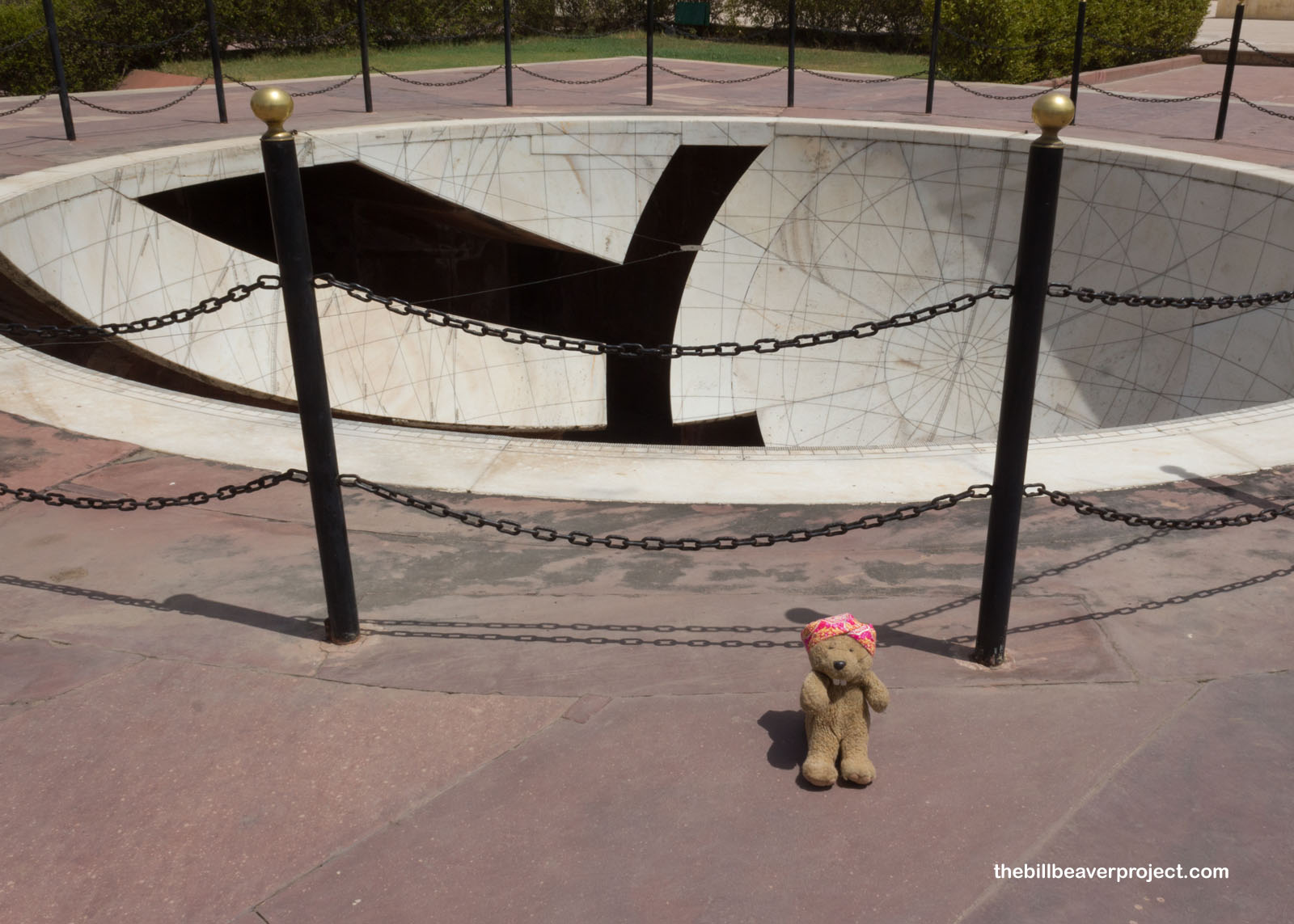 |
But the Zodiac couldn’t possibly just be measured by one device, so Jai Singh II had twelve more measurement devices installed, sundial shaped, and pointing to each section of the ecliptic for the purpose of calculating horoscopes! This section of the Janitor Mantar is called the Rashivalaya Yantras. I found the Gemini yantra, but because it was day time, I had no idea what horoscopic tips it had for me!
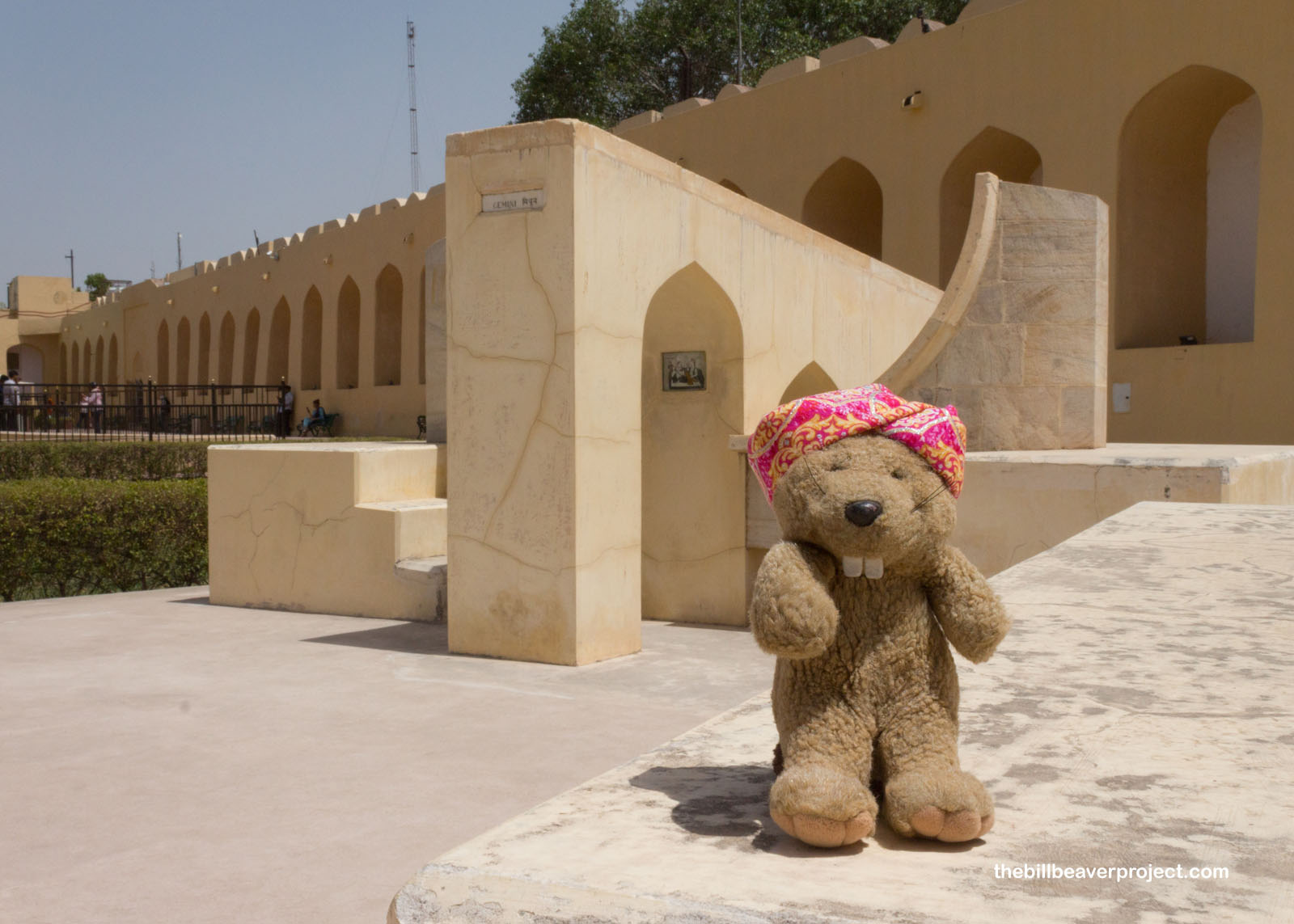 |
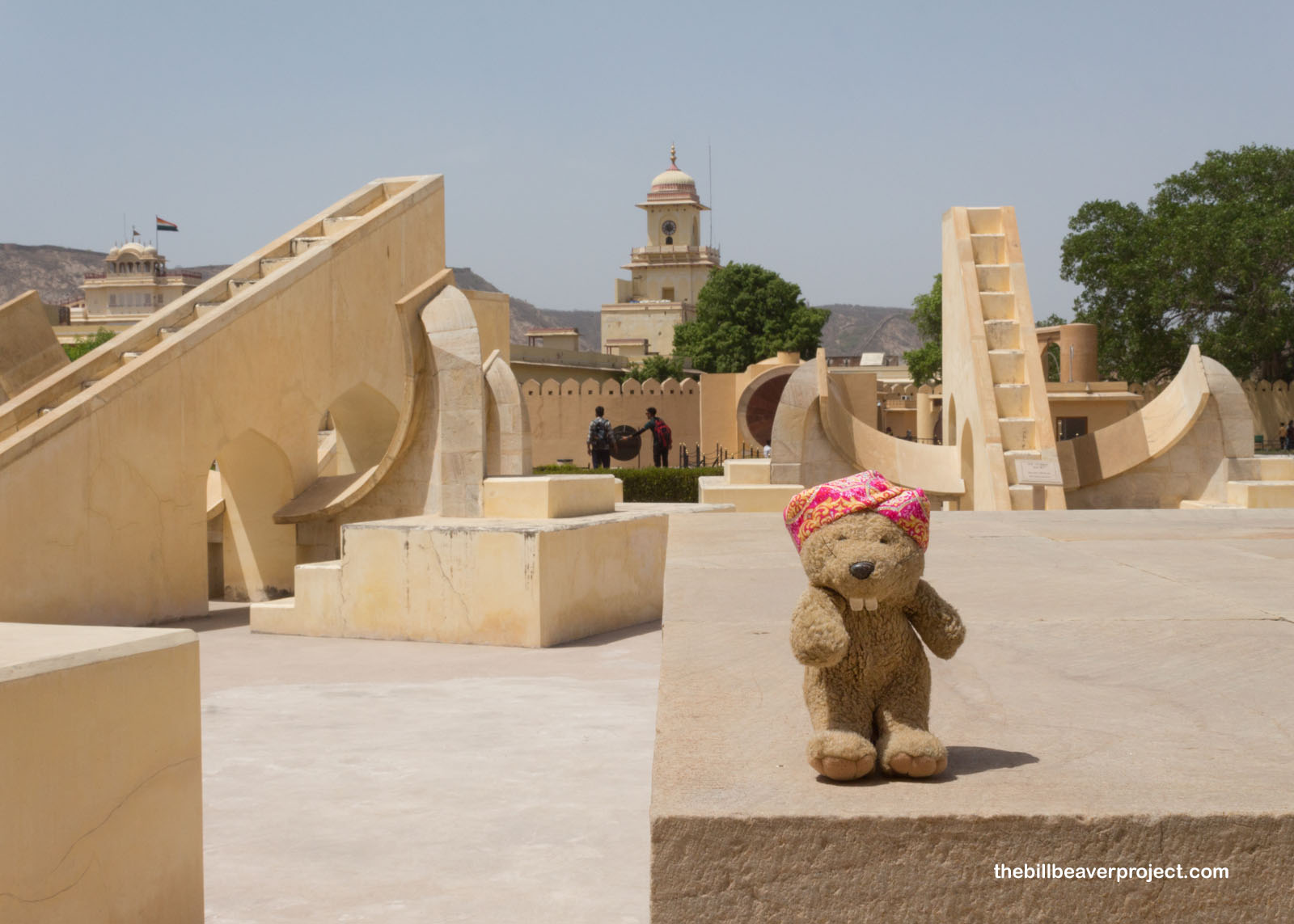 |
To conclude the blistering tour of the Jantar Mantar, we beheld the Supreme Instrument, the Samrat Yantra! The world’a largest sundial at 88 feet in height, the Samrat Yantra can calculate time accurately to within 2 seconds! While this was all very amazing, I scorched my poor toes climbing up for this photo, and decided the time had come to head back indoors.
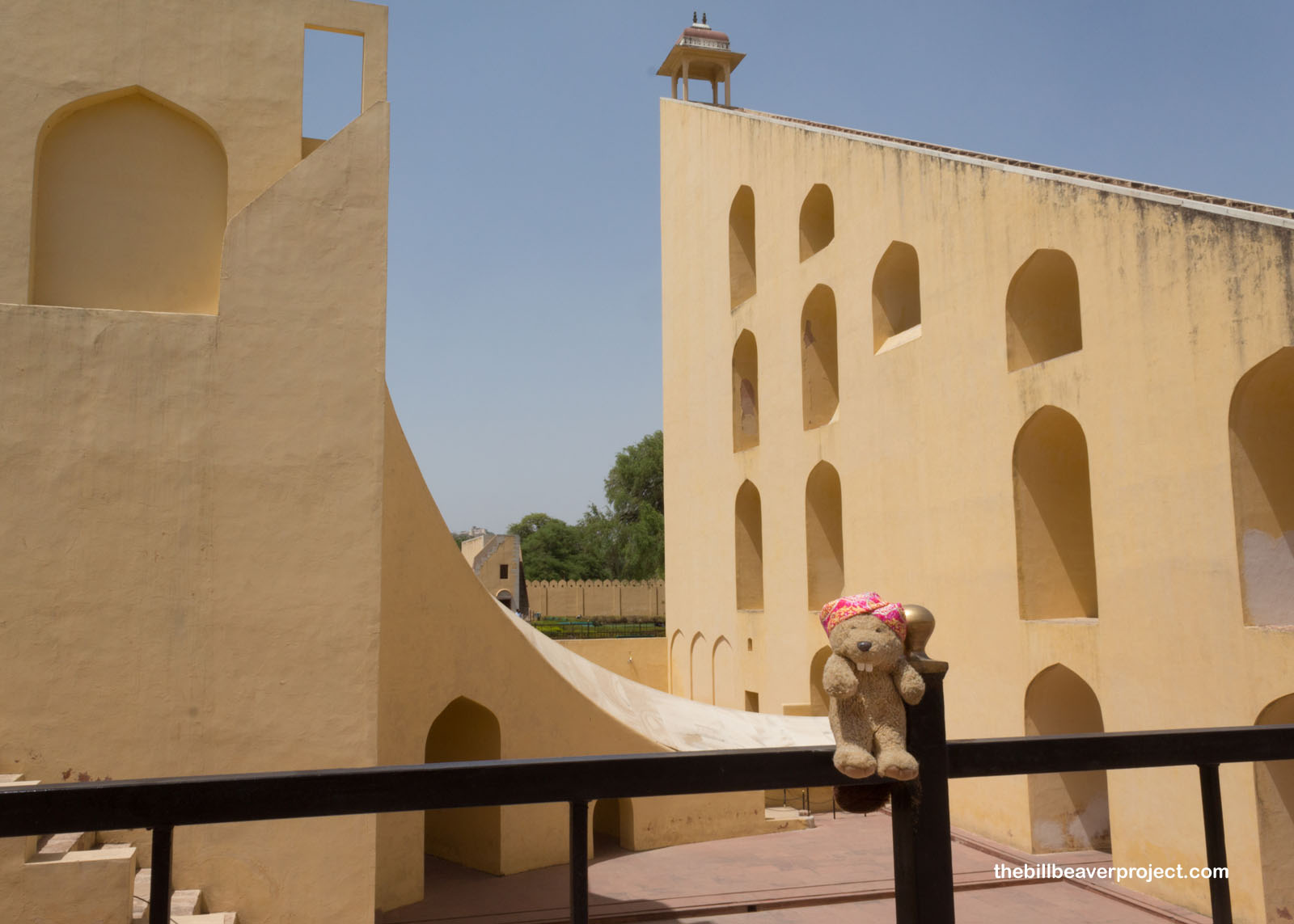 |
Manoj interpreted this as interest in shopping, and he dropped me off at what I can only describe as the roach motel for tourists: you check in, but you don’t check out! I got roped in by the free palm reading (they knew I was living far from where I was born!) then sent through a gem showroom, a textile showroom, an art showroom, and showroom after showroom, each fully staffed by hungry sales folks who descended upon me like mosquitoes! I made it out alive, but it was a stressful end to my visit to the Pink City.
Nonetheless, today was full of amazing sights, and I would still recommend Jaipur to anyone visiting northern India. This was going to be the conclusion of my Golden Triangle tour, a whirlwind for sure! Tomorrow, Mr. Annu will take me back to Delhi, and I will hop on a short flight to another historic destination on the subcontinent. It should be a real tree-t!
Pachhe milsyān!

 Last Stage |
Total Ground Covered: 725.3 mi (1,167.2 km)* *Just driving! Doesn’t include flights. |
 Next Stage |
